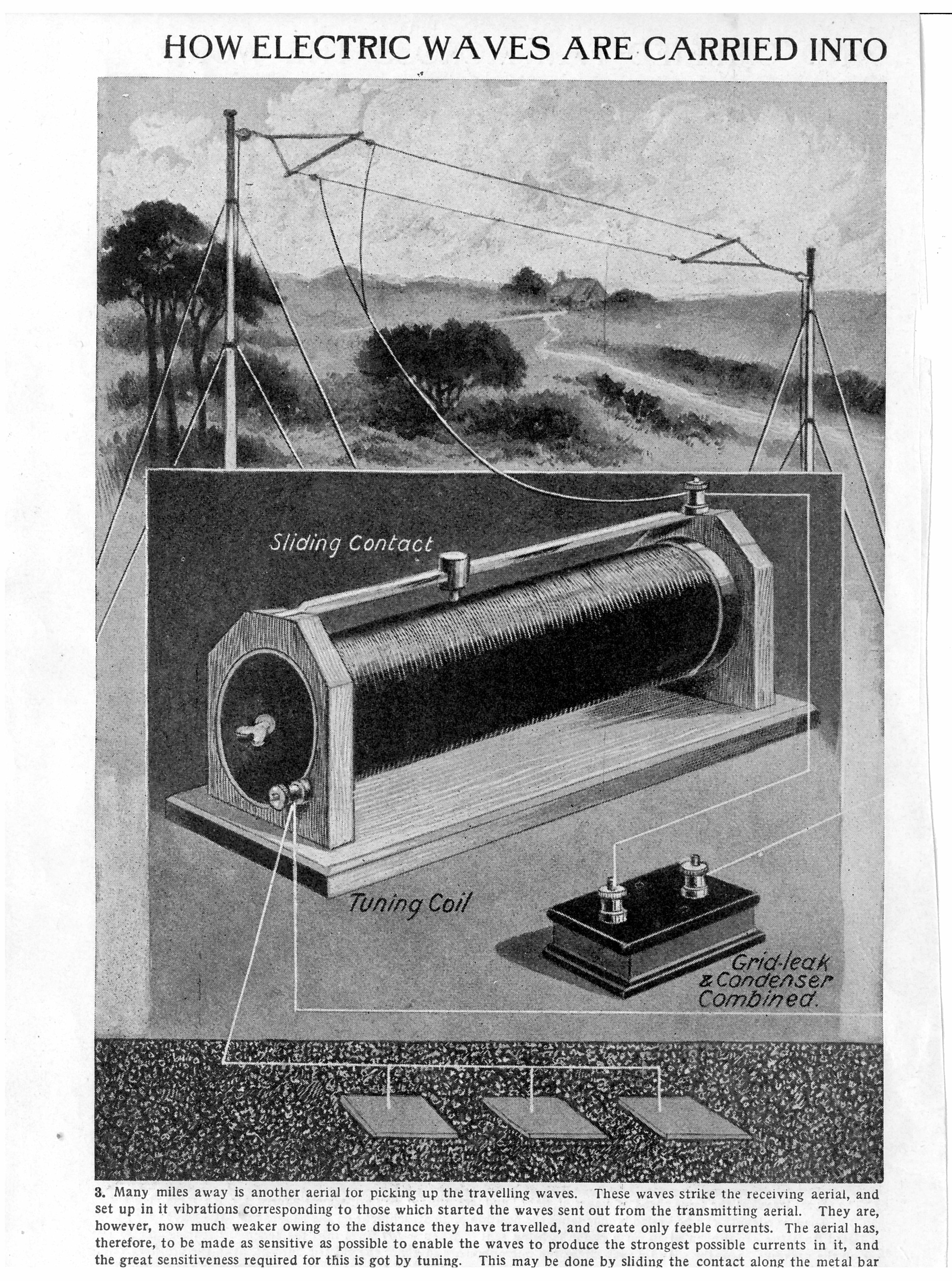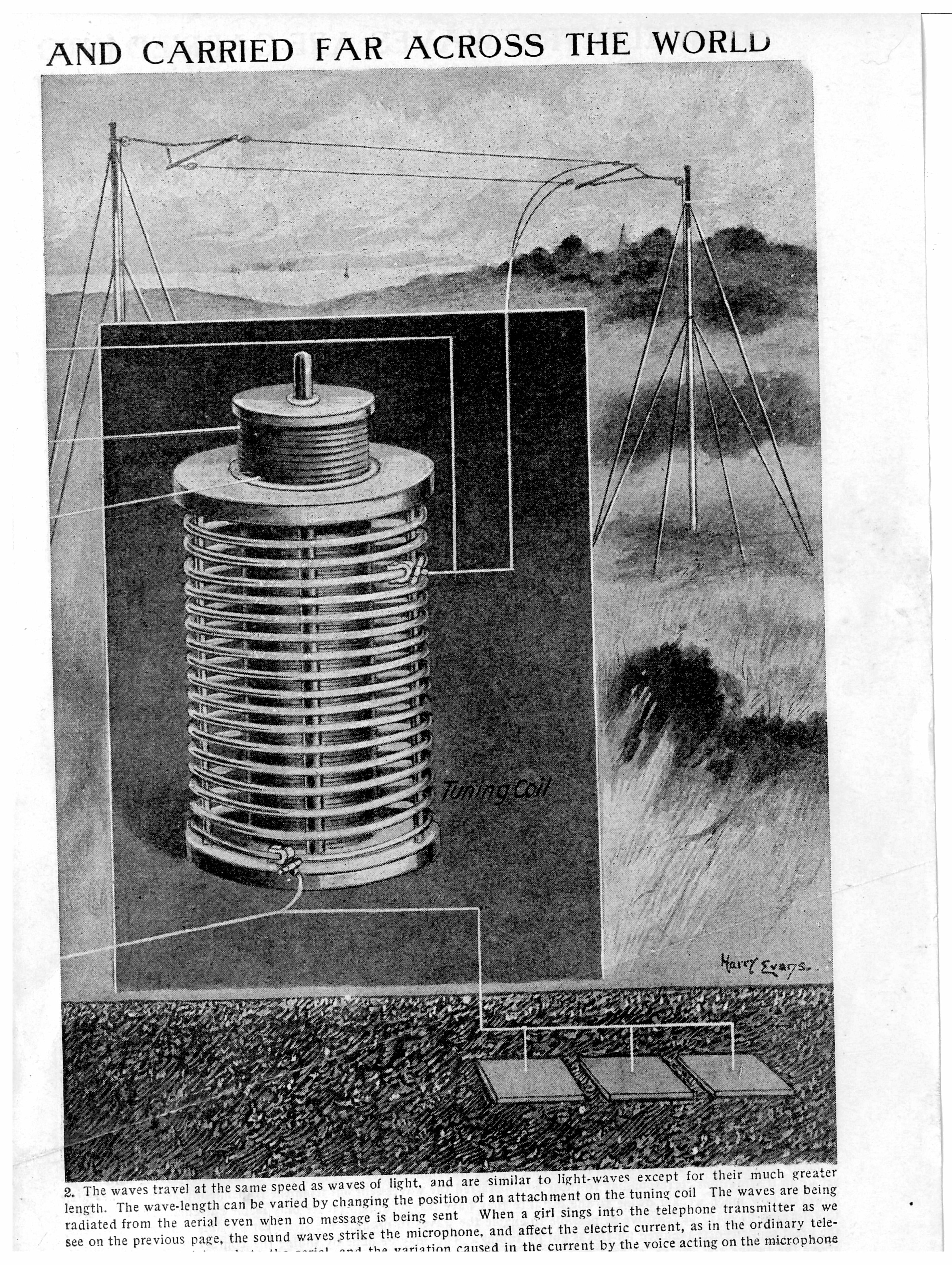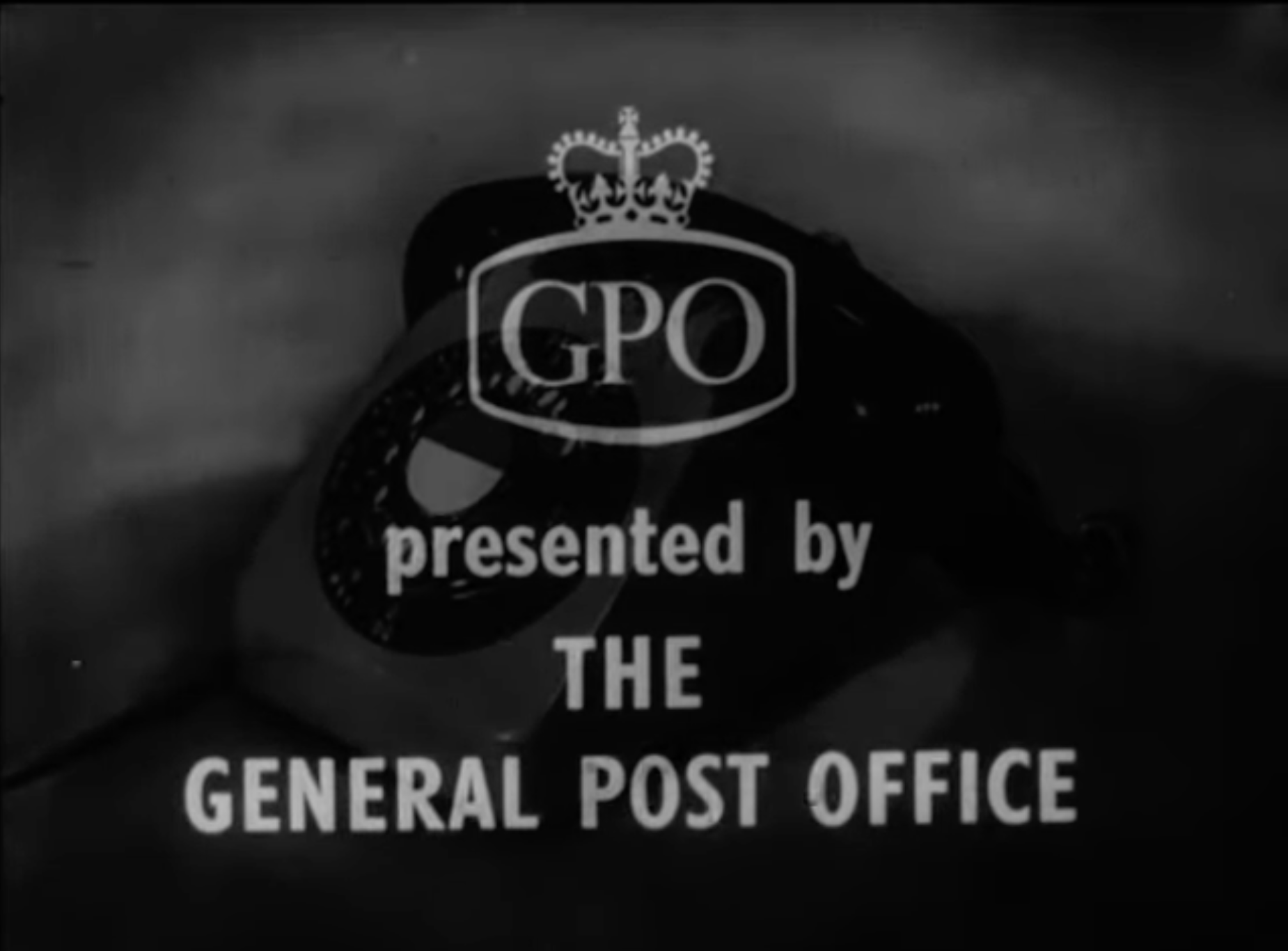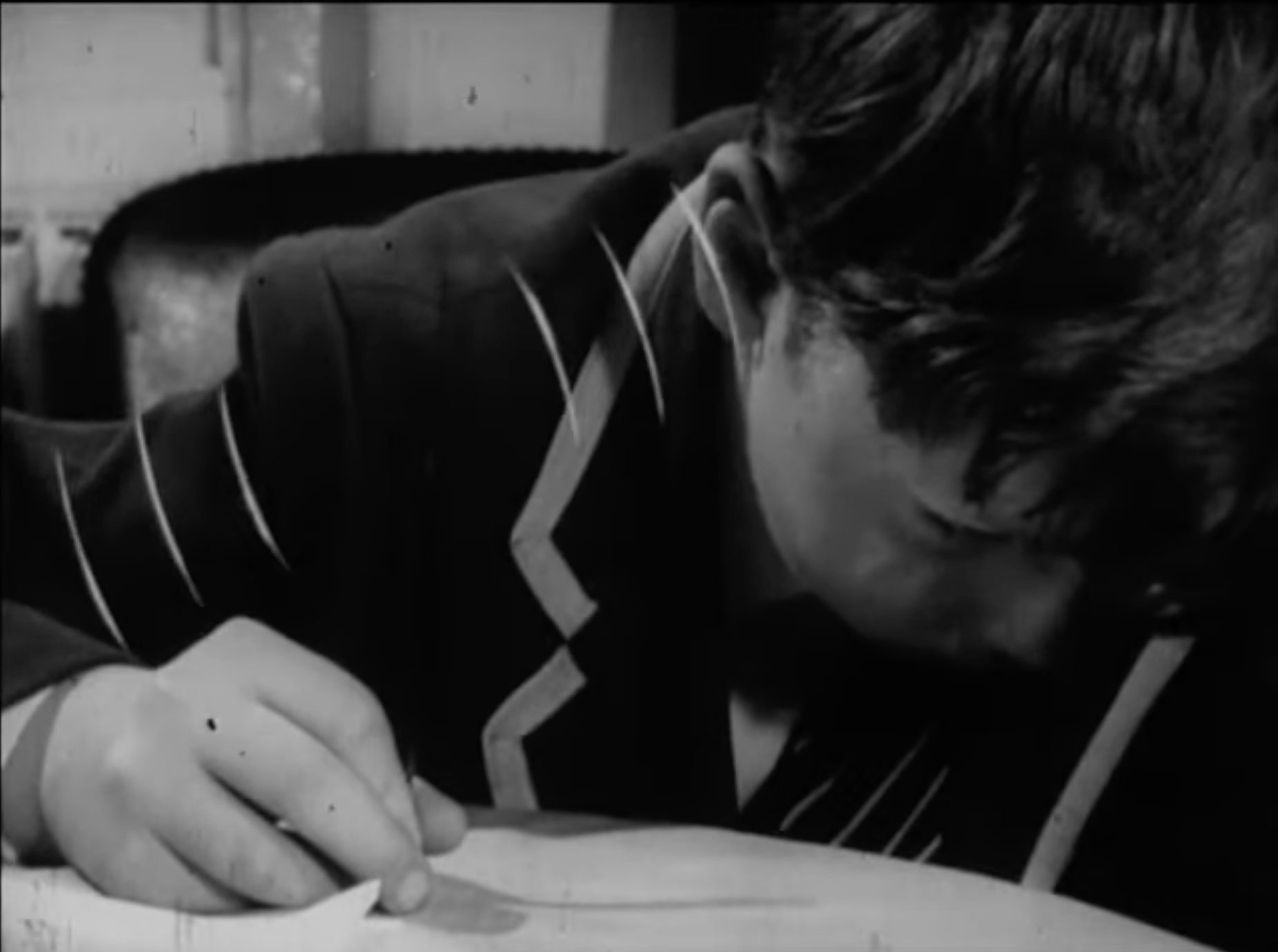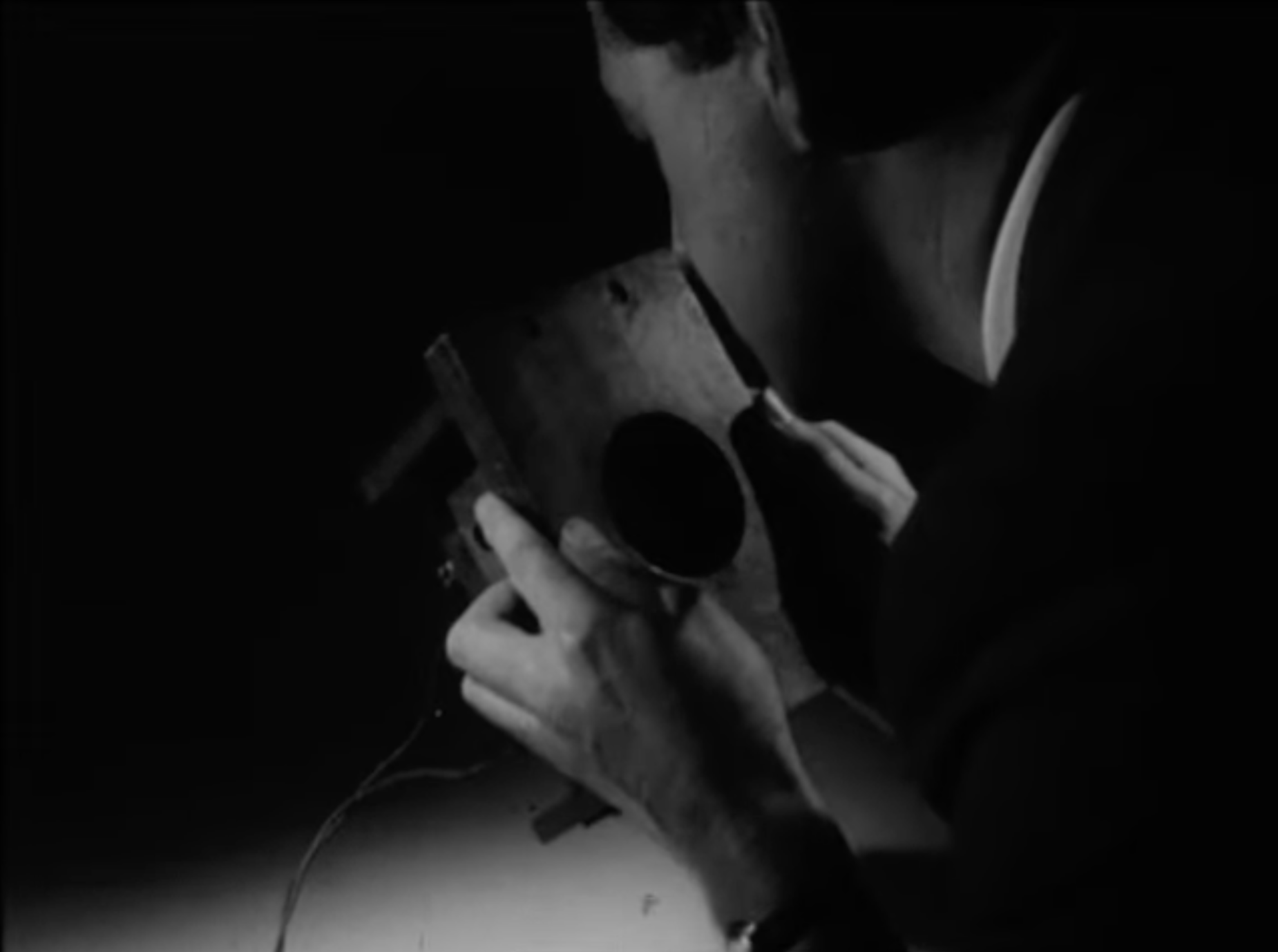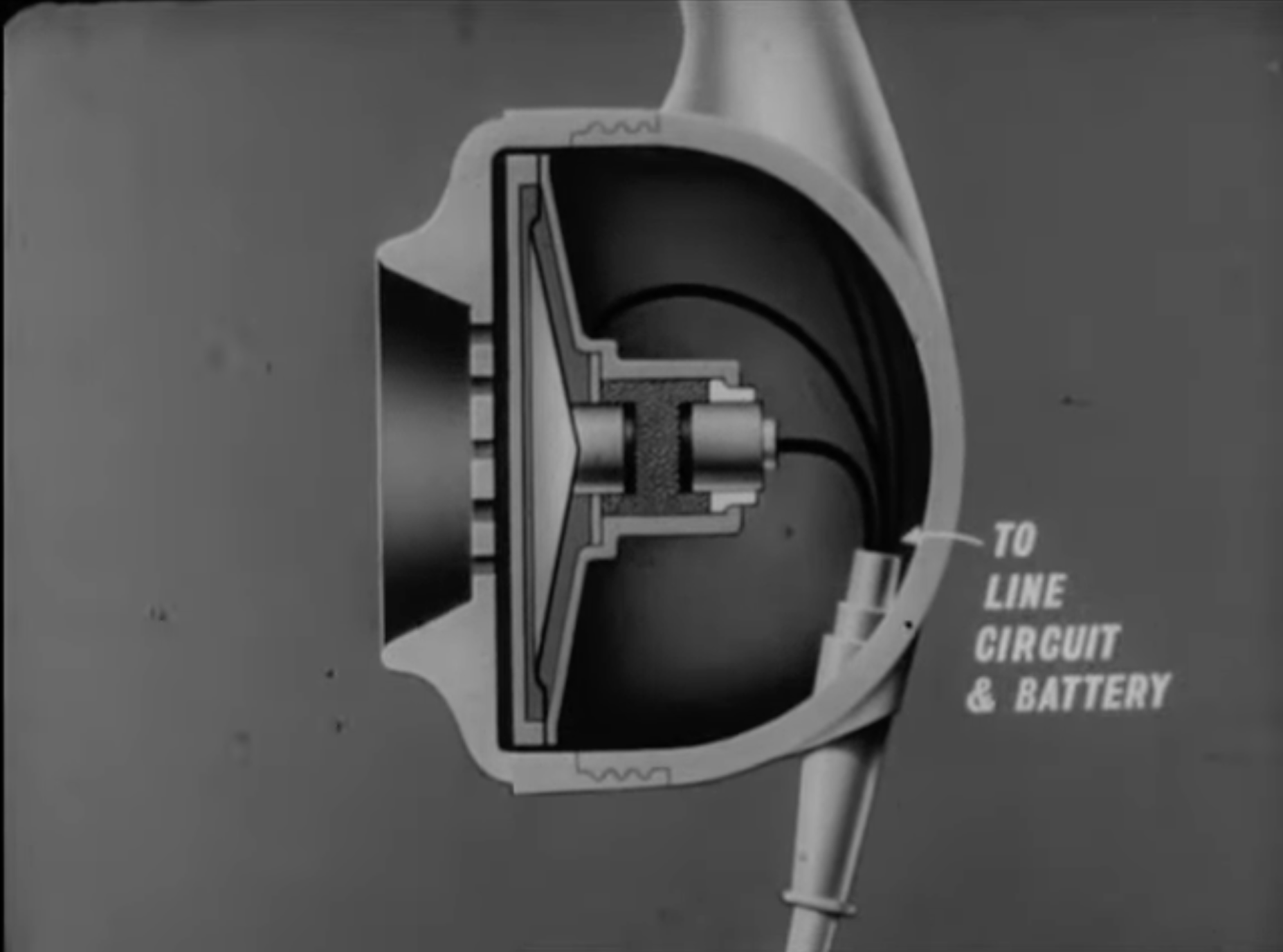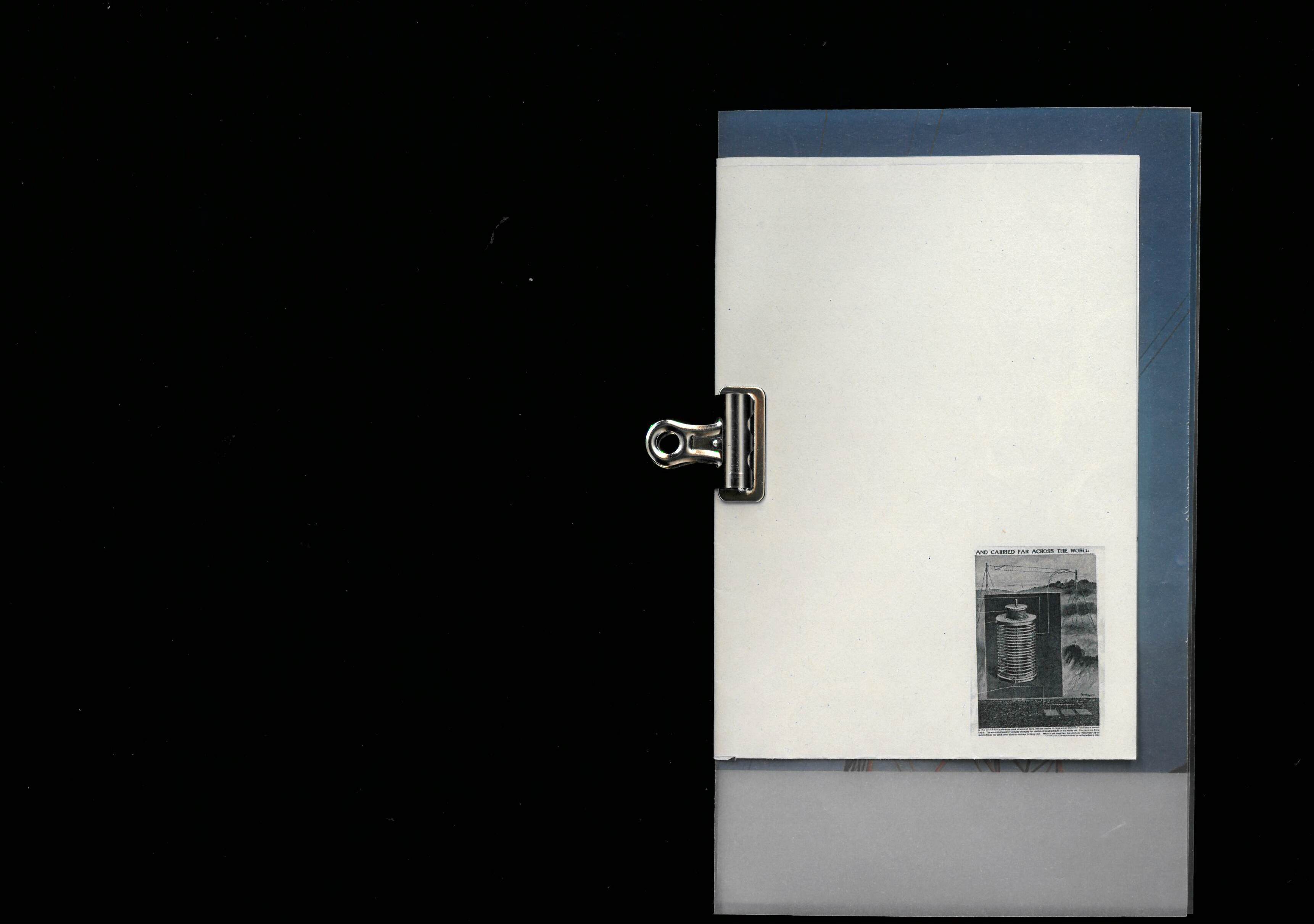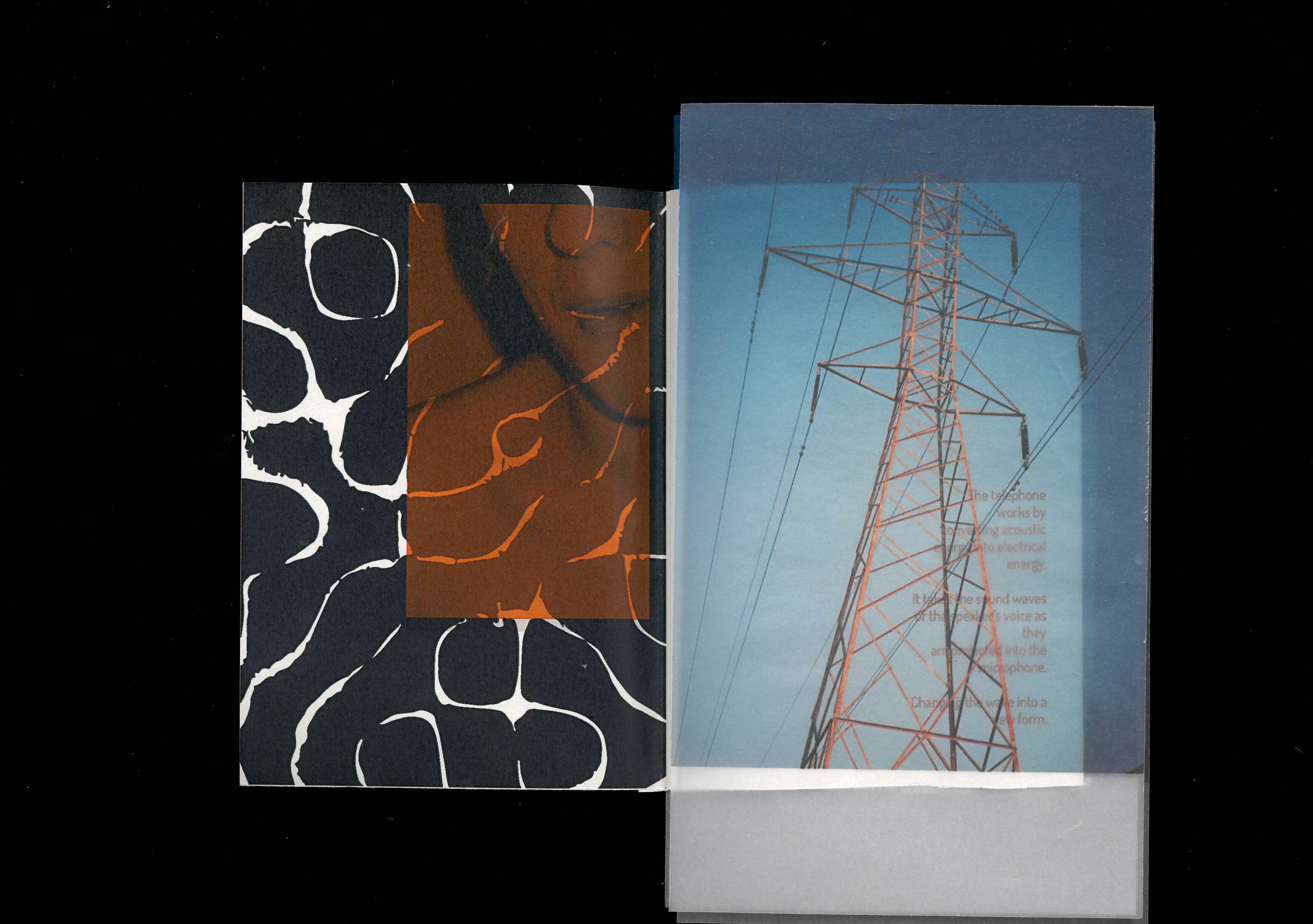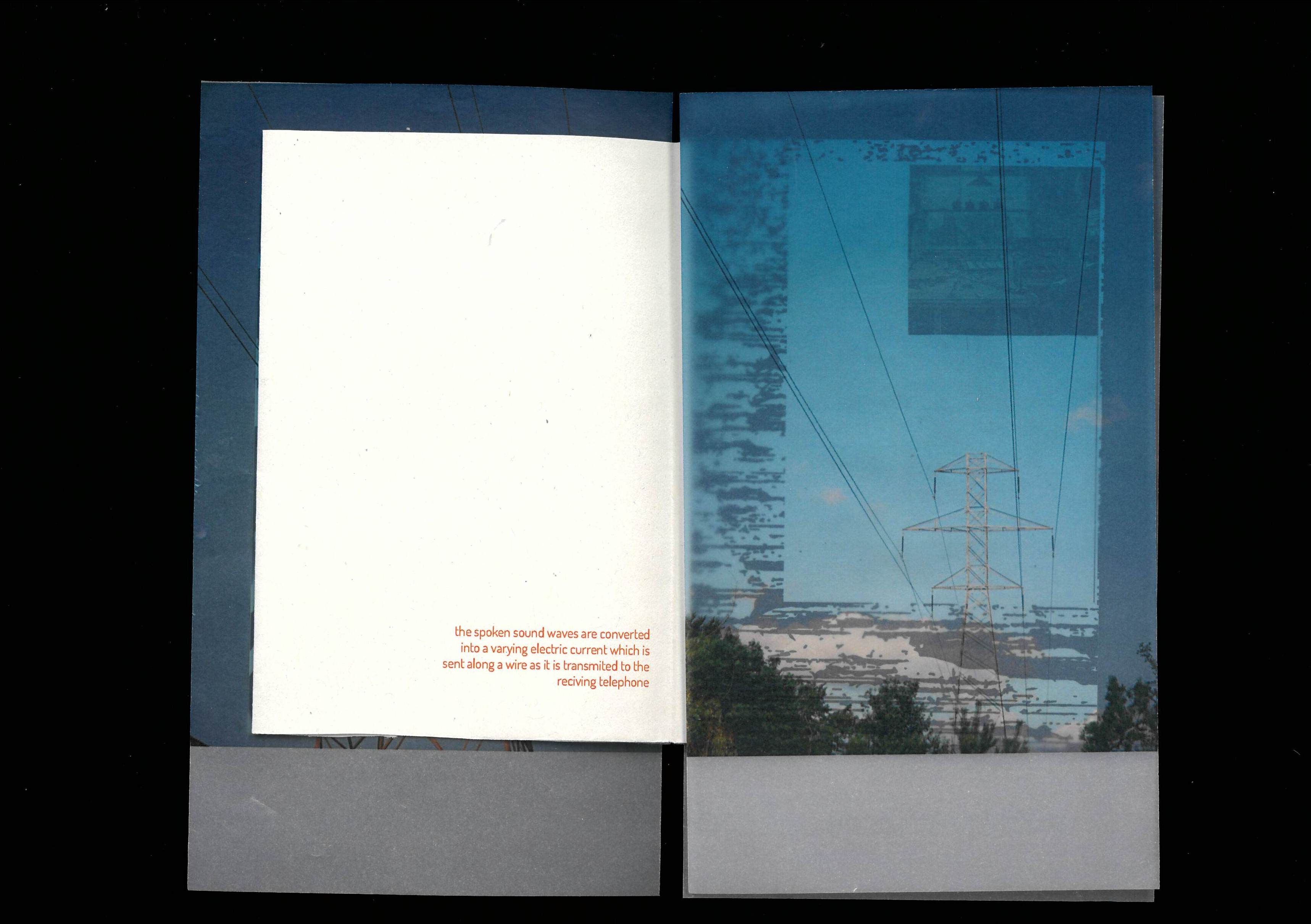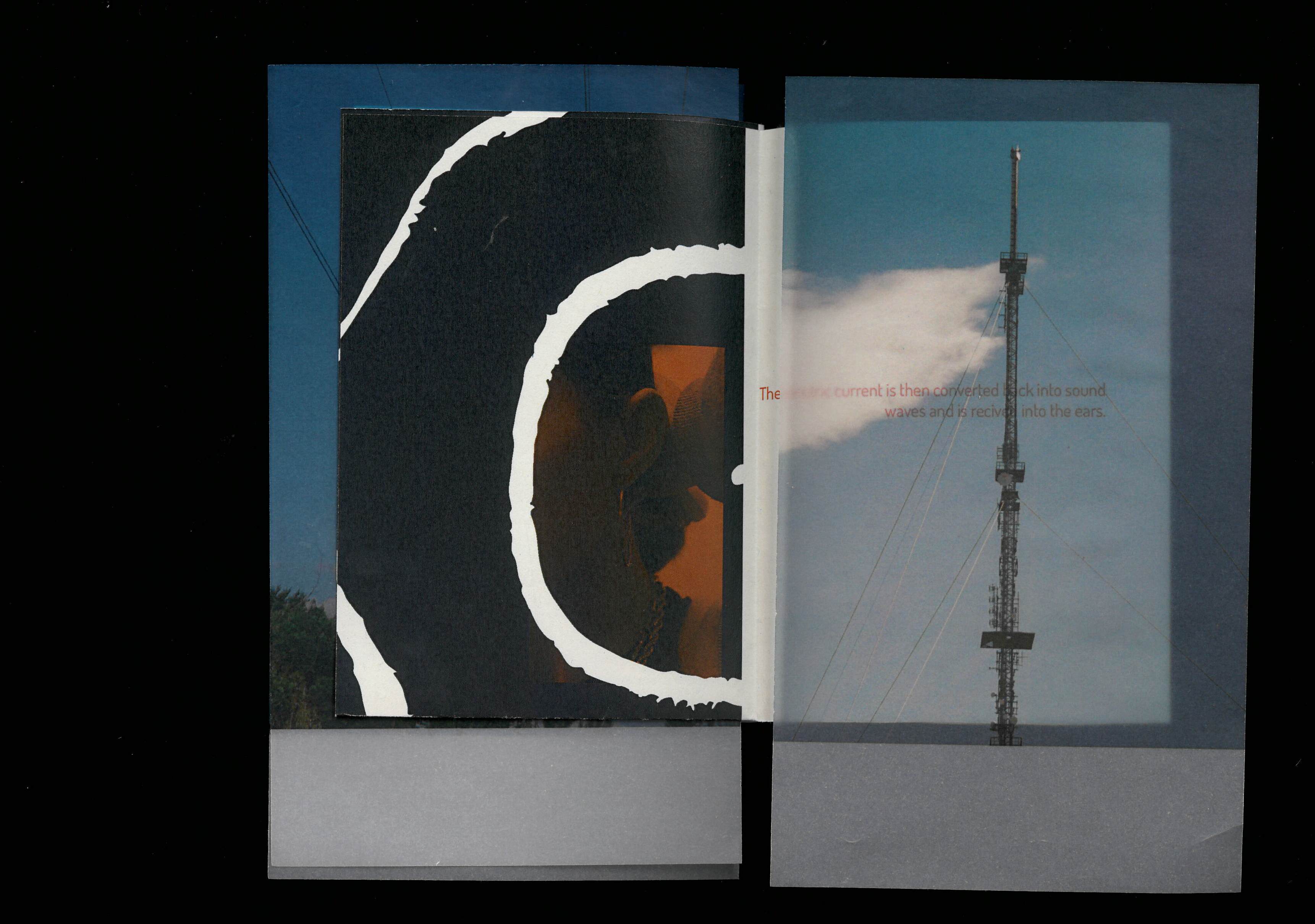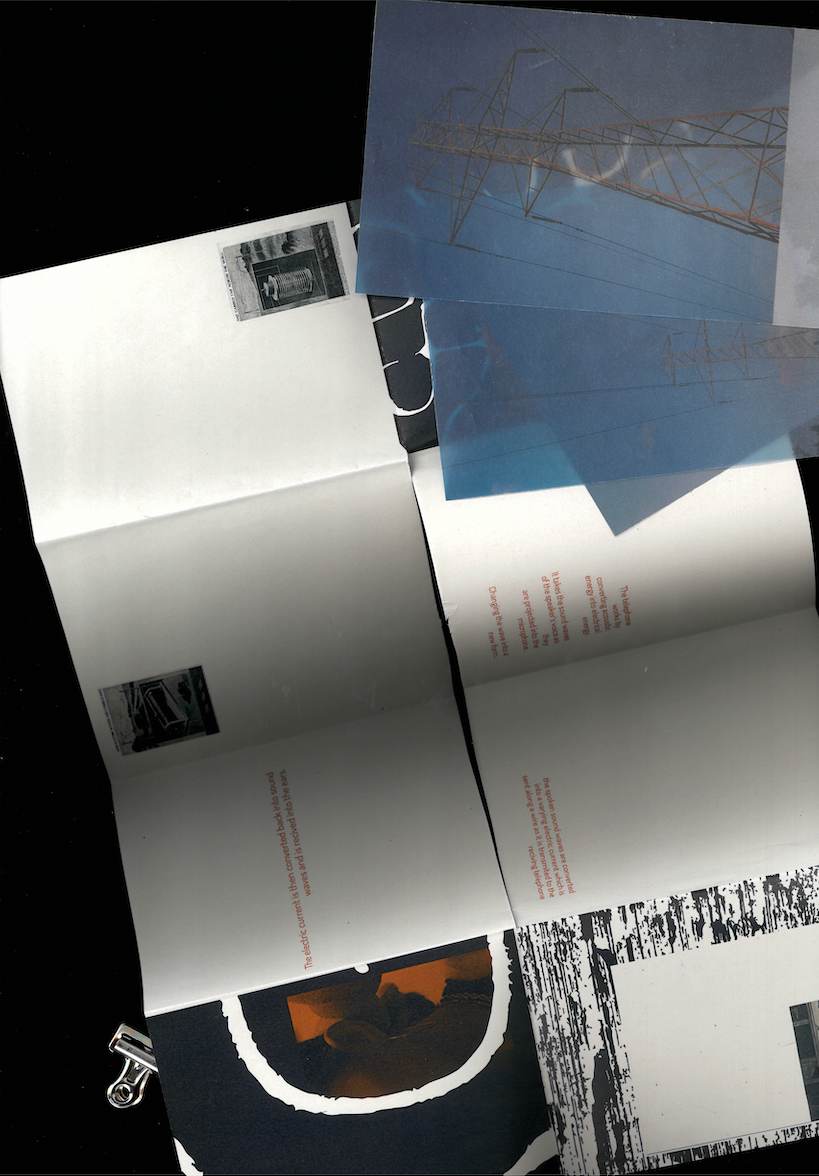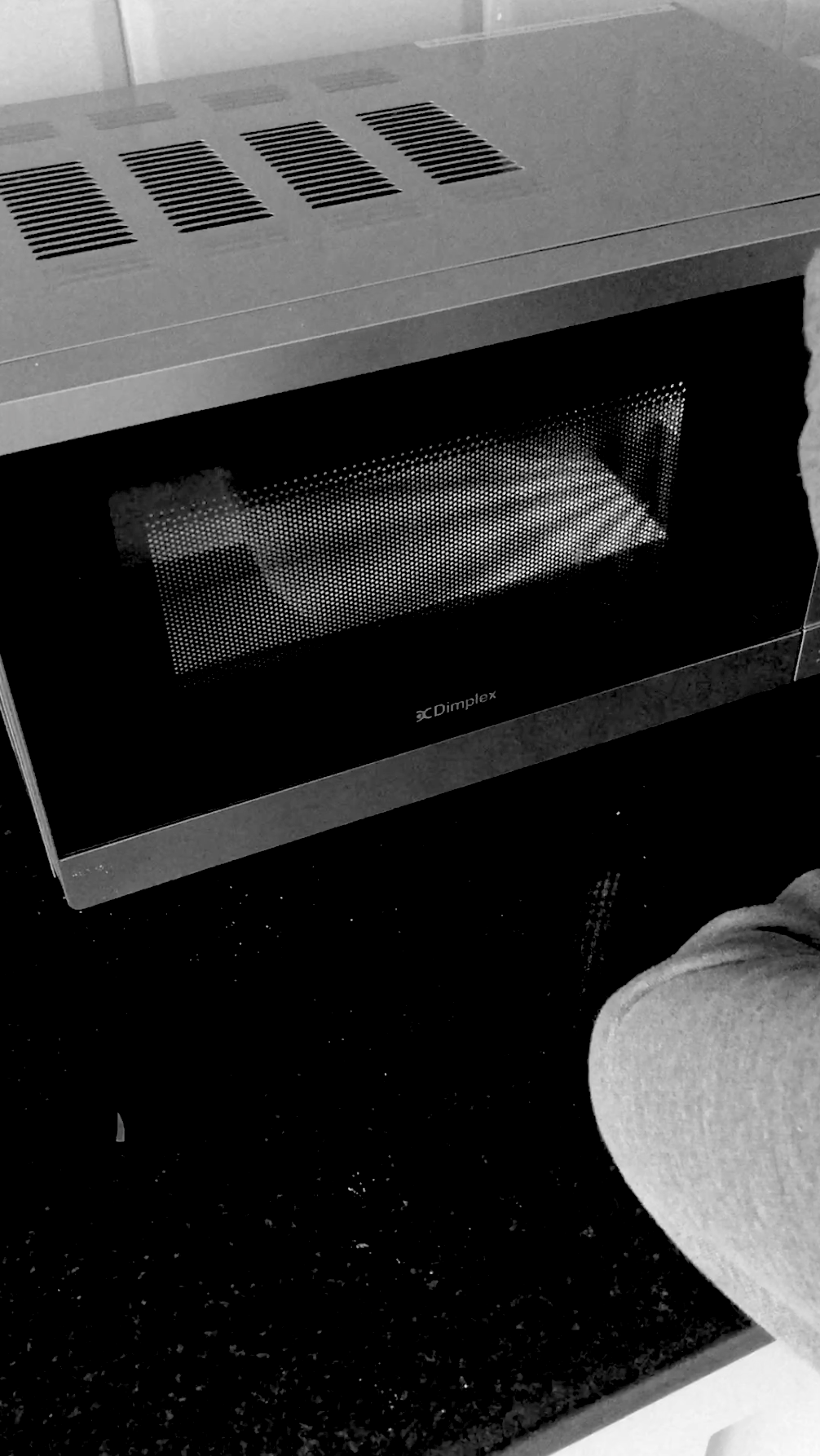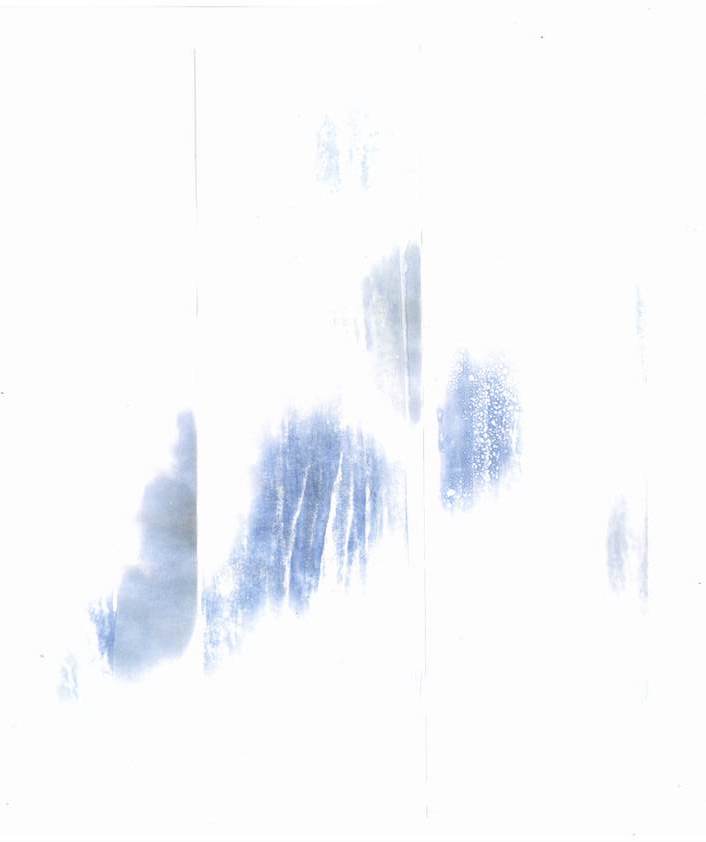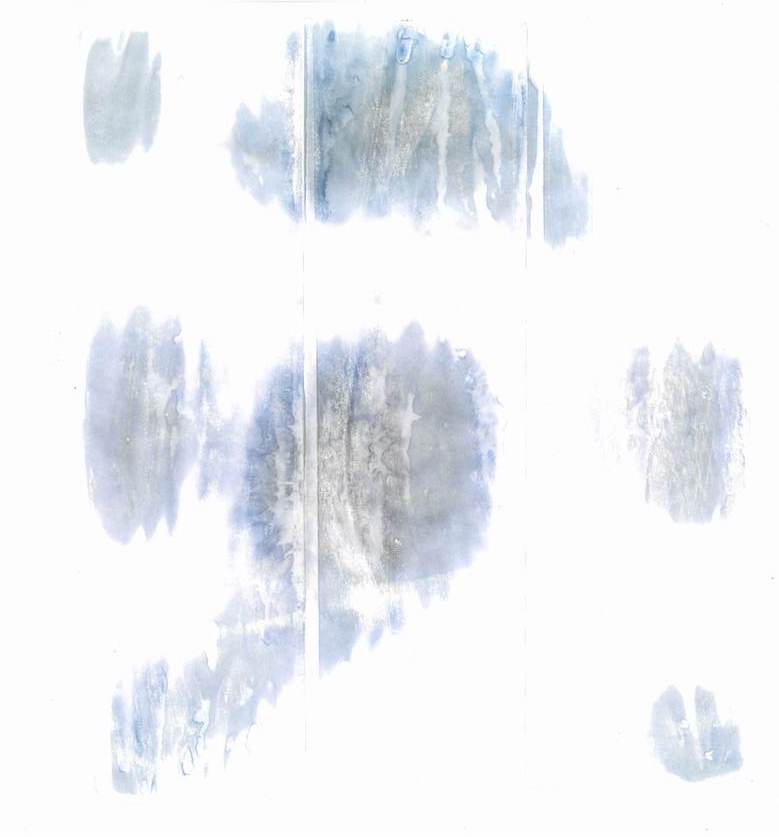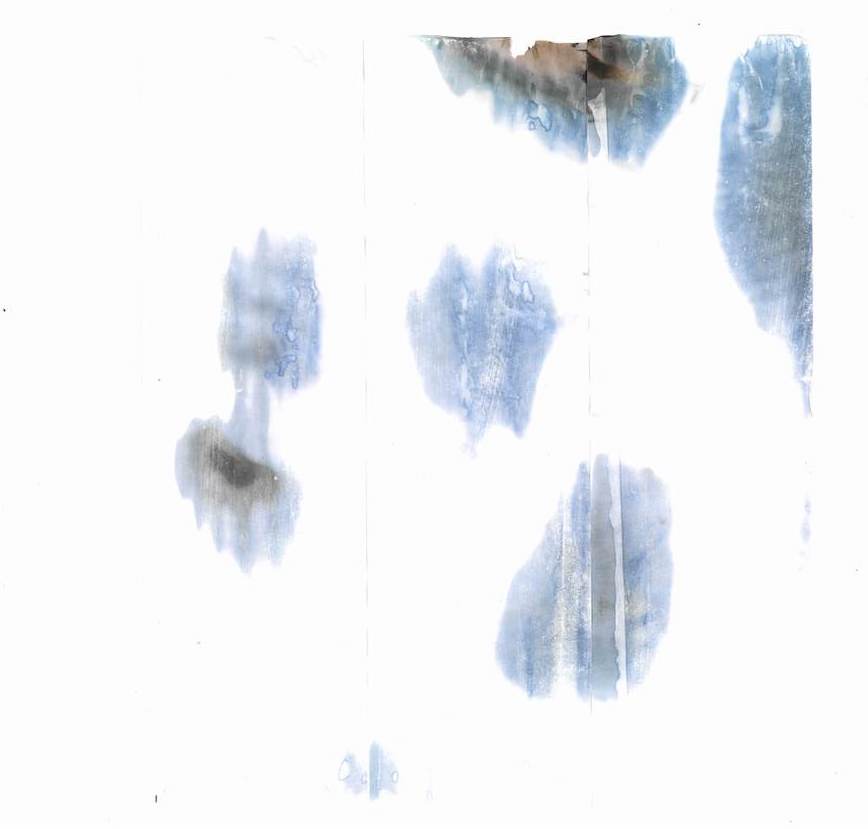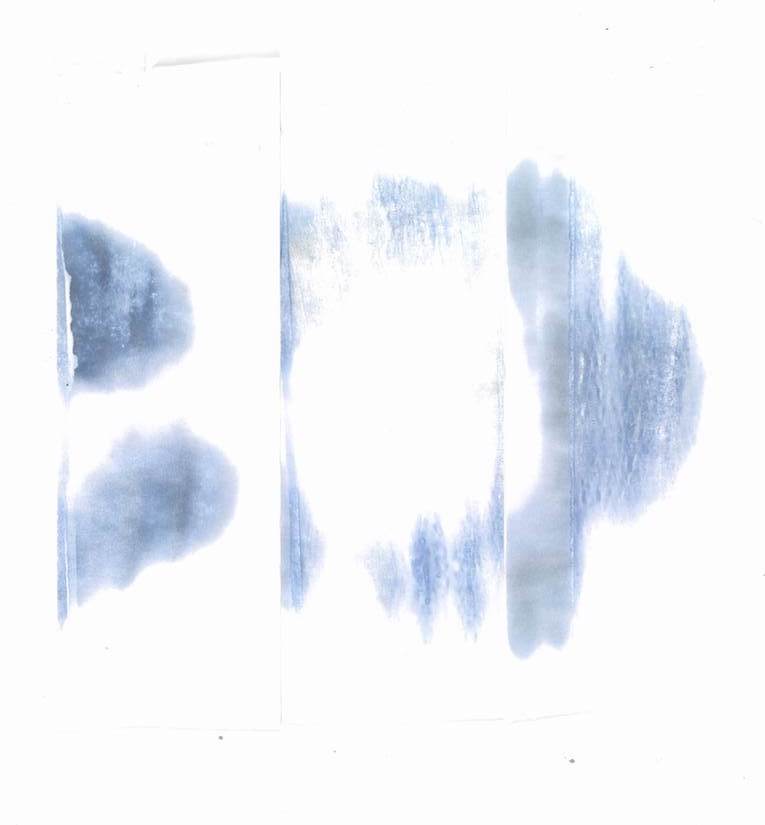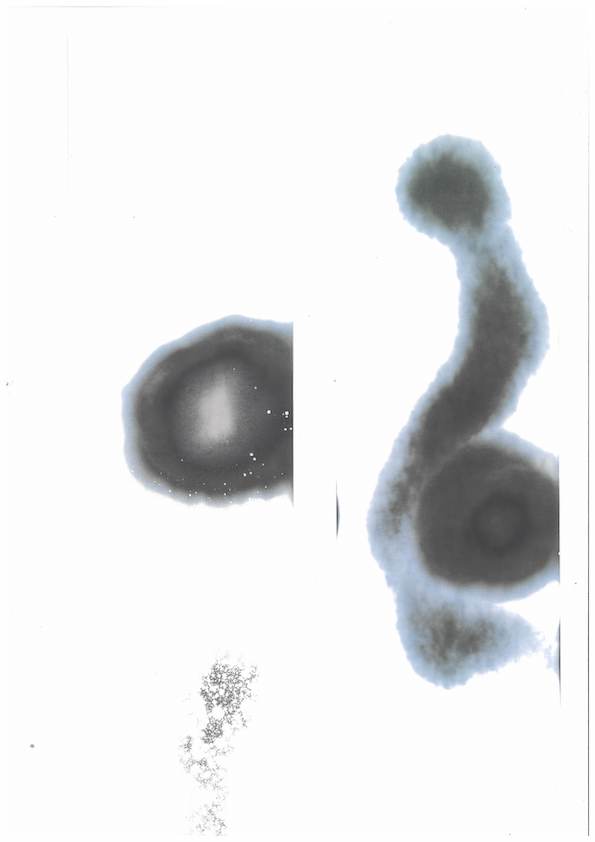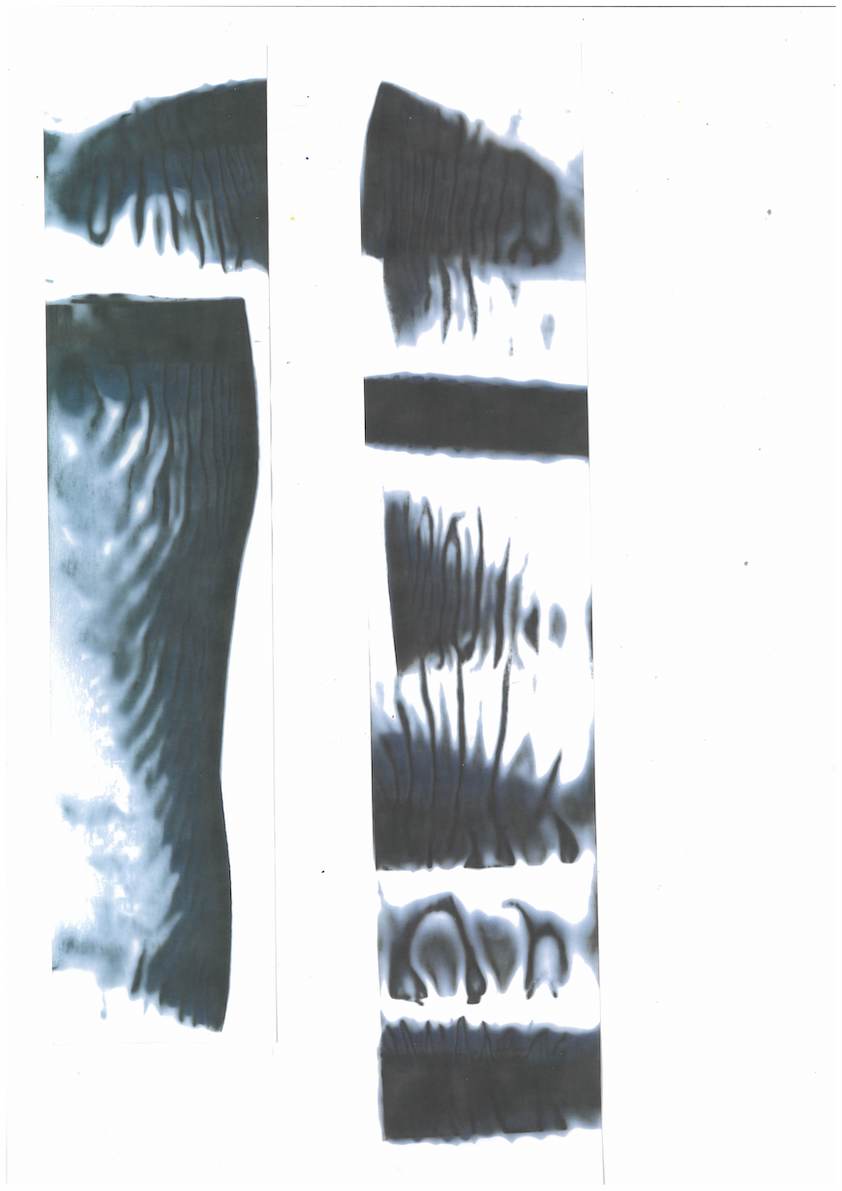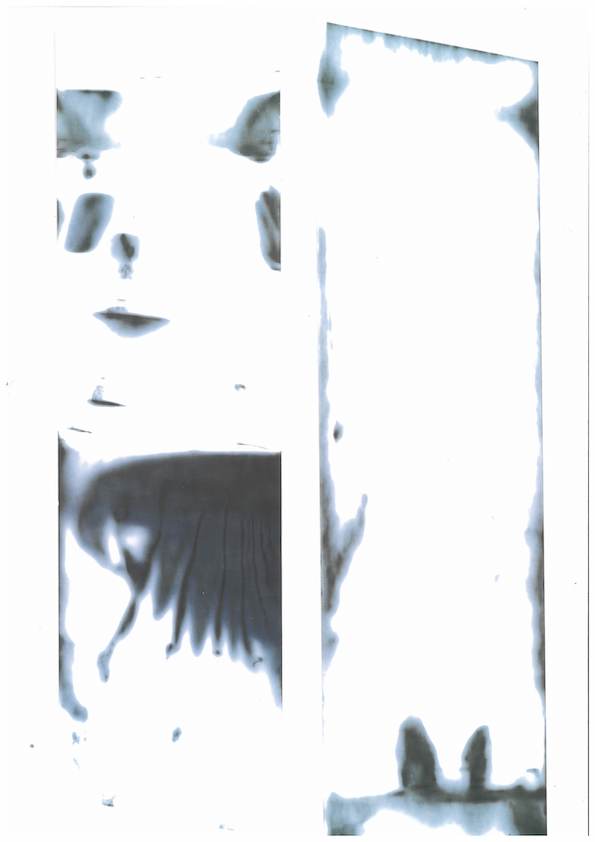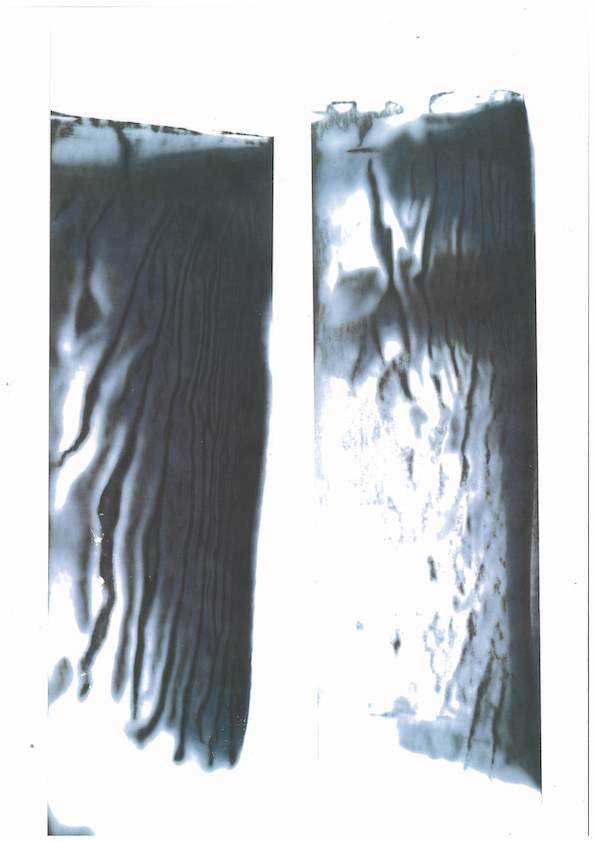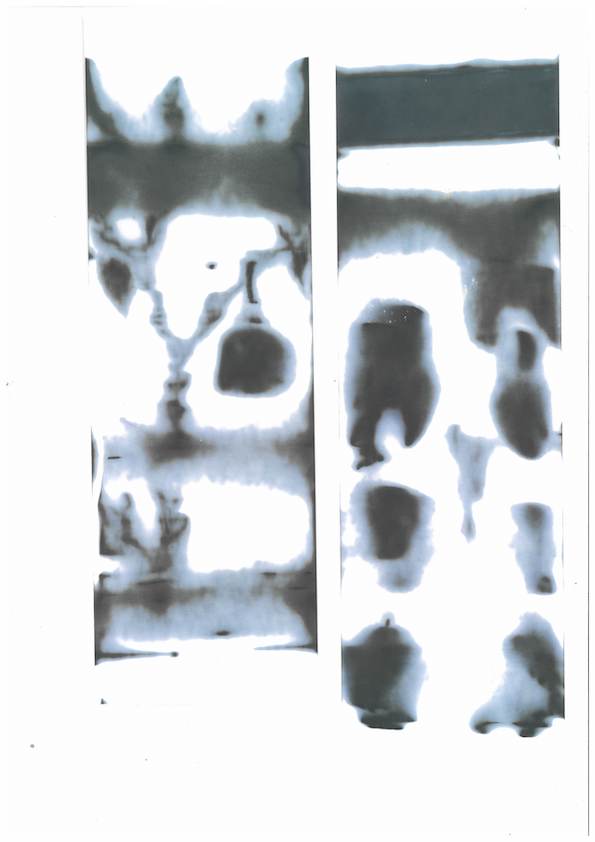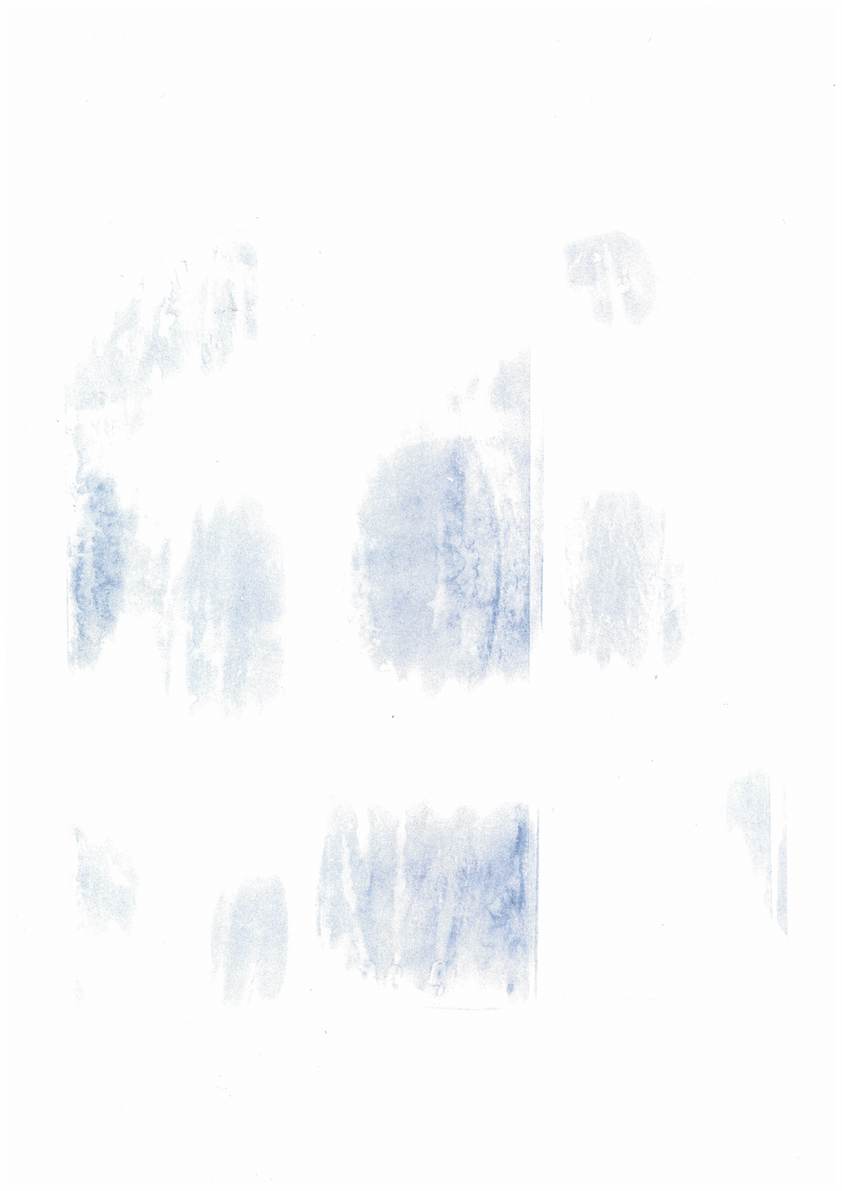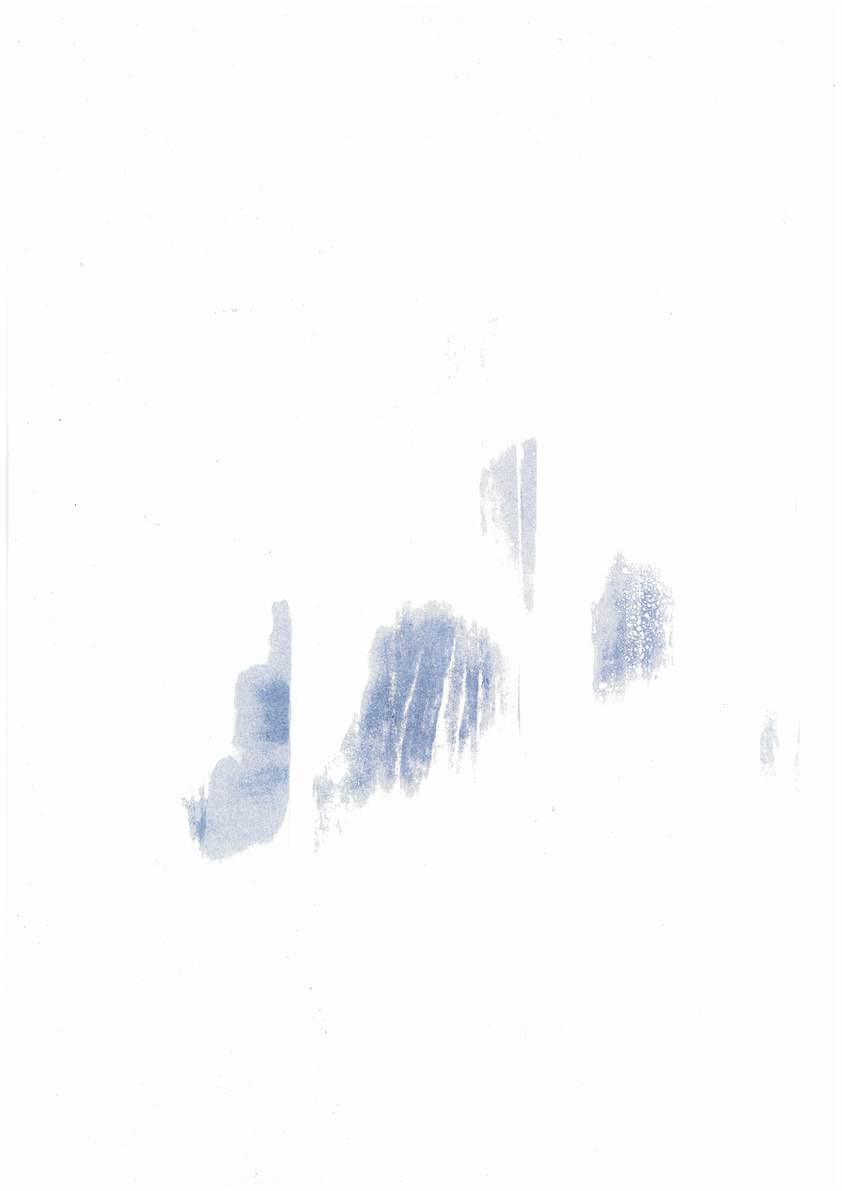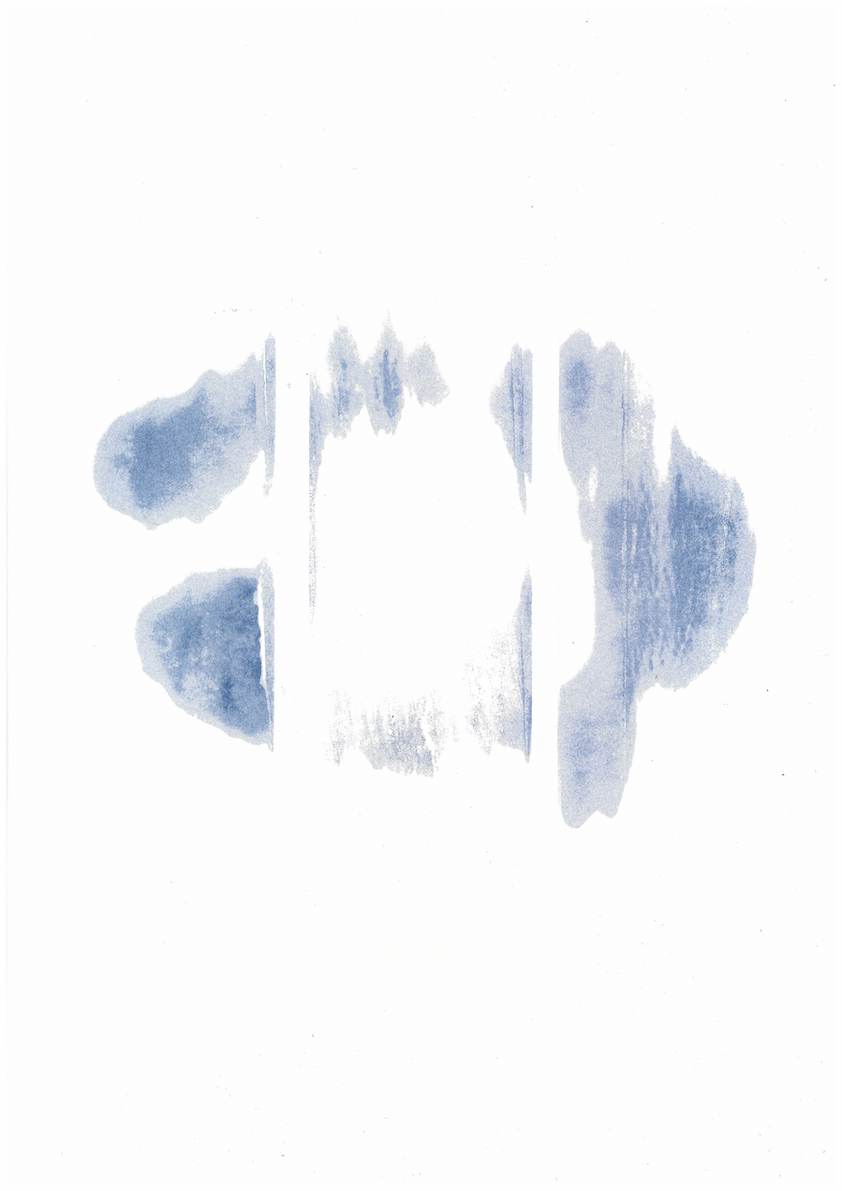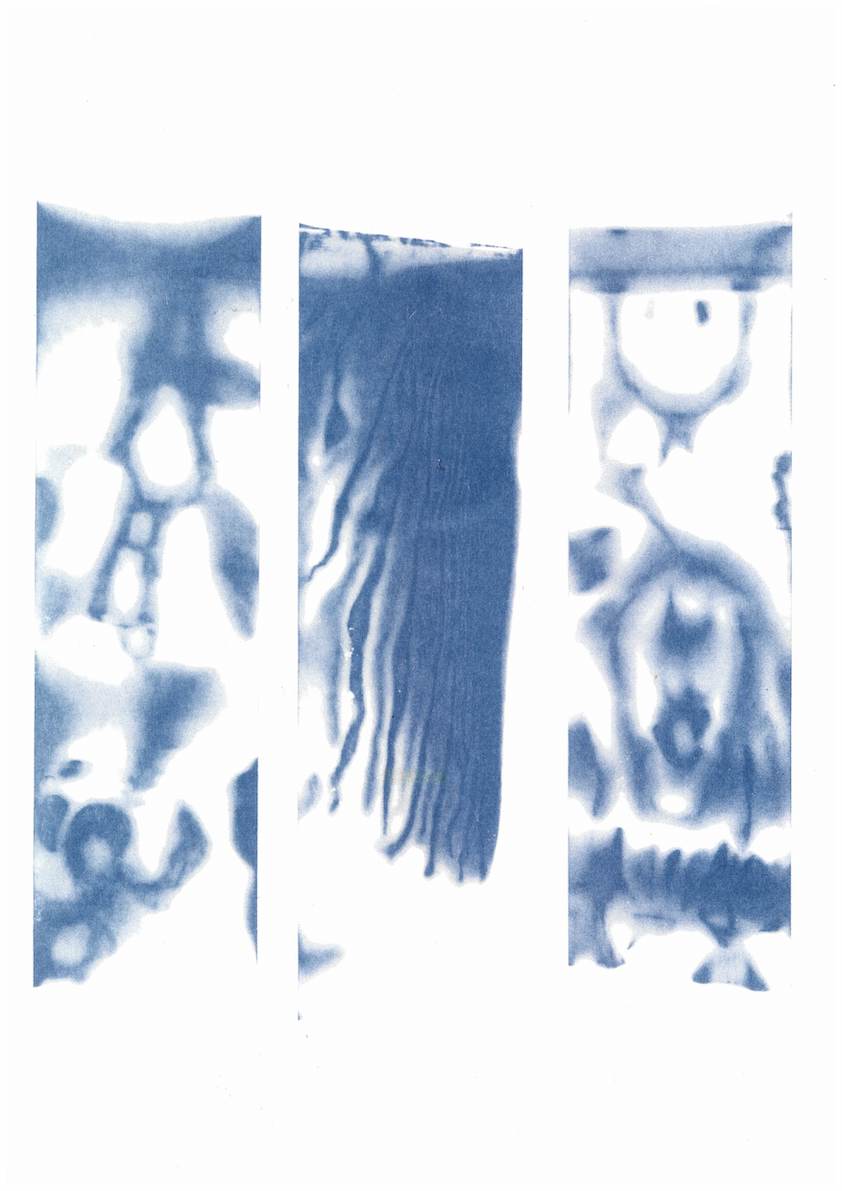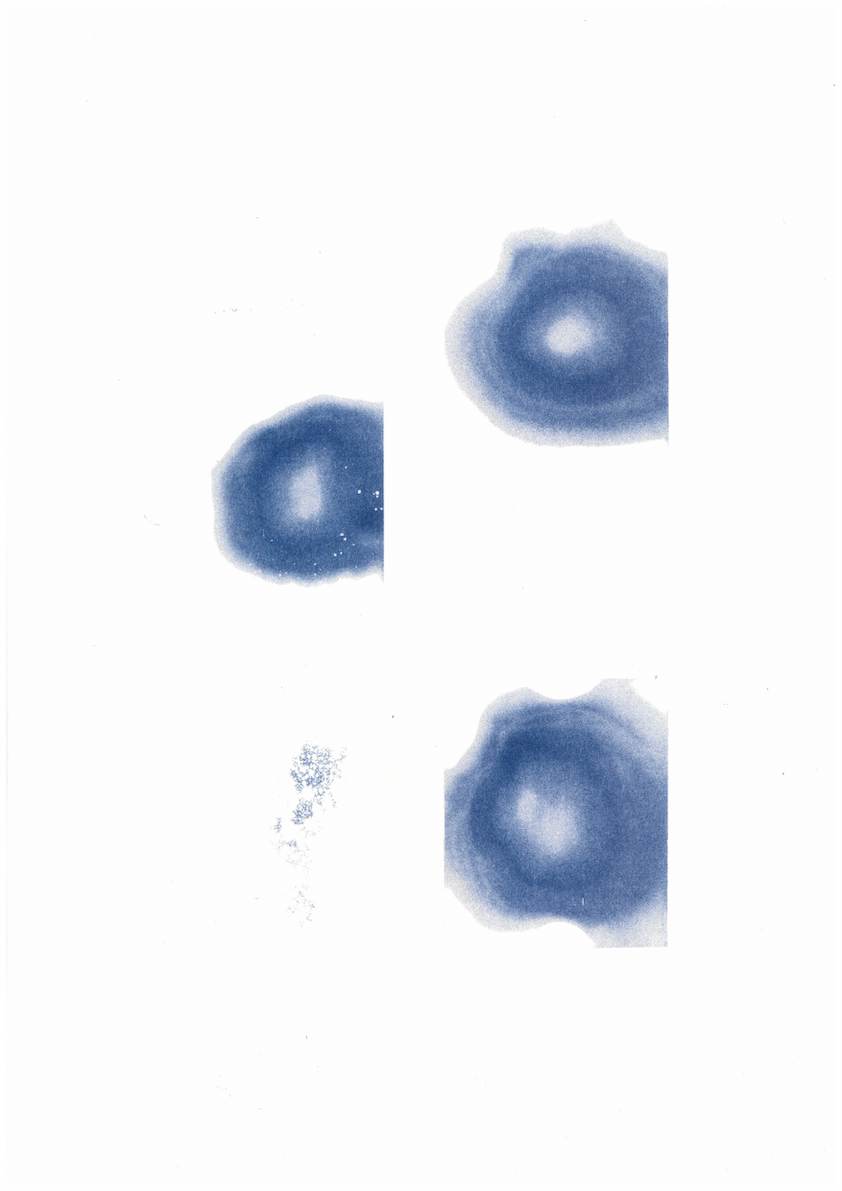The splash of a drop is a transaction which is accomplished in the twinkling of an eye, and it may seem to some that a man who proposes to discourse on the matter for an hour must have lost all sense of proportion. If that opinion exists, I hope this evening to be able to remove it, and to convince you that we have to deal with an exquisitely regulated phenomenon, and one which very happily illustrates some of the fundamental properties of fluids. It may be mentioned also that the recent researches of Lenard in Germany and J.J. Thomson at Cambridge, on the curious development of electrical charges that accompanies certain kinds of splashes, have invested with a new interest any examination of the mechanics of the phenomenon. It is to the mechanical and not to the electrical side of the question that I shall call your attention this evening.



The first well-directed and deliberate observations on the subject that I am acquainted with were made by a school-boy at Rugby some twenty years ago, and were reported by him to the Rugby Natural History Society. He had observed that the marks of accidental splashes of ink-drops that had fallen on some smoked glasses with which he was experimenting, presented an appearance not easy to account for. Drops of the same size falling from the same height had made always the same kind of mark, which, when carefully examined with a lens, showed that the smoke had been swept away in a system of minute concentric rings and fine striæ.
Specimens of such patterns, obtained by letting drops of mercury, alcohol, and water fall on to smoked glass, are thrown on the screen, and the main characteristics are easily recognized. Such a pattern corresponds to the footprints of the dance that has been performed on the surface, and though the drop may be lying unbroken on the plate, it has evidently been taking violent exercise, and were our vision acute enough we might observe that it was still palpitating after its exertions.





The apparatus by which this has been accomplished is on the table before you. Time will not suffice to explain how it grew out of earlier arrangements very different in appearance, but its action is very simple and easy to follow by reference to the diagram below.

AA´ is a light wooden rod rather longer and thicker than an ordinary lead pencil, and pivoted on a horizontal axle O. The rod bears at the end A a small deep watch-glass, or segment of a watch-glass, whose surface has been smoked, so that a drop, even of water will lie on it without adhesion. The end A´ carries a small strip of tinned iron, which can be pressed against and held down by an electro-magnet CC´. When the current of the electro-magnet is cut off the iron is released, and the end A´ of the rod is tossed up by the action of a piece of india-rubber stretched catapult-wise across two pegs at E, and by this means the drop resting on the watch-glass is left in mid-air free to fall from rest.
Elasticity and a source of energy are the preconditions for periodic motion, and when the elastic object is an extended body, then the periodic motion takes the form of traveling waves.
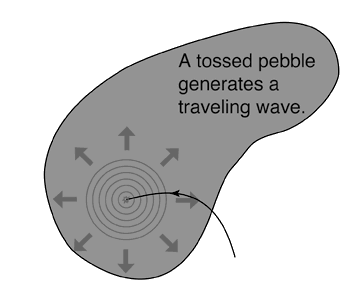
A pond has an equilibrium level, and gravity serves as a restoring force. When work is done on the surface to disturb its level, a transverse wave is produced.
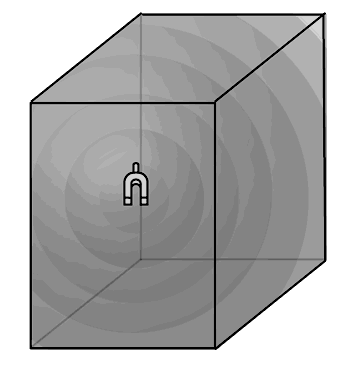
A disturbance of the air pressure at a single point produces a spherical traveling pressure wave (sound). A sound wave in air is a longitudinal wave.
A pebble thrown into a pond will produce concentric circular ripples which move outward from the point of impact. If a fishing float is in the water, the float will bob up and down as the wave moves by. This is a characteristic of transverse waves. Such waves obey the wave relationship.
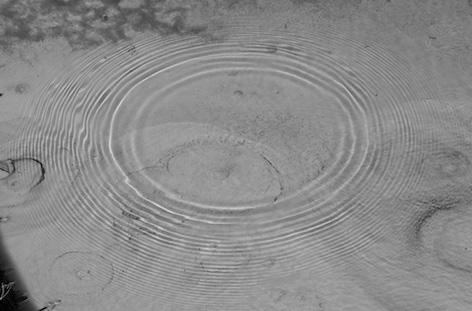
This is an example of the transverse waves produced by bubbles rising from the bottom of this clear pool along the Icefields Parkway in Alberta, Canada. Although not exactly a circle, and not exactly a sine wave, these ripples show the tendency of surface disturbances to produce traveling waves in all directions from the source.
“The splash of a drop” Is a focused, documented study on the physics and aesthetics of a splashing drop. The imagery in this publication is simple and beautiful in how it glorifies a seemingly inconsequential moment.
My goal here is to explore “the splash of a drop” in a comparatively primitive manner to create my own interpretation.
The first step was to try to capture this split-second. (As always) I took to photography, using a very fast shutter speed I attempted to capture this moment.
I failed -
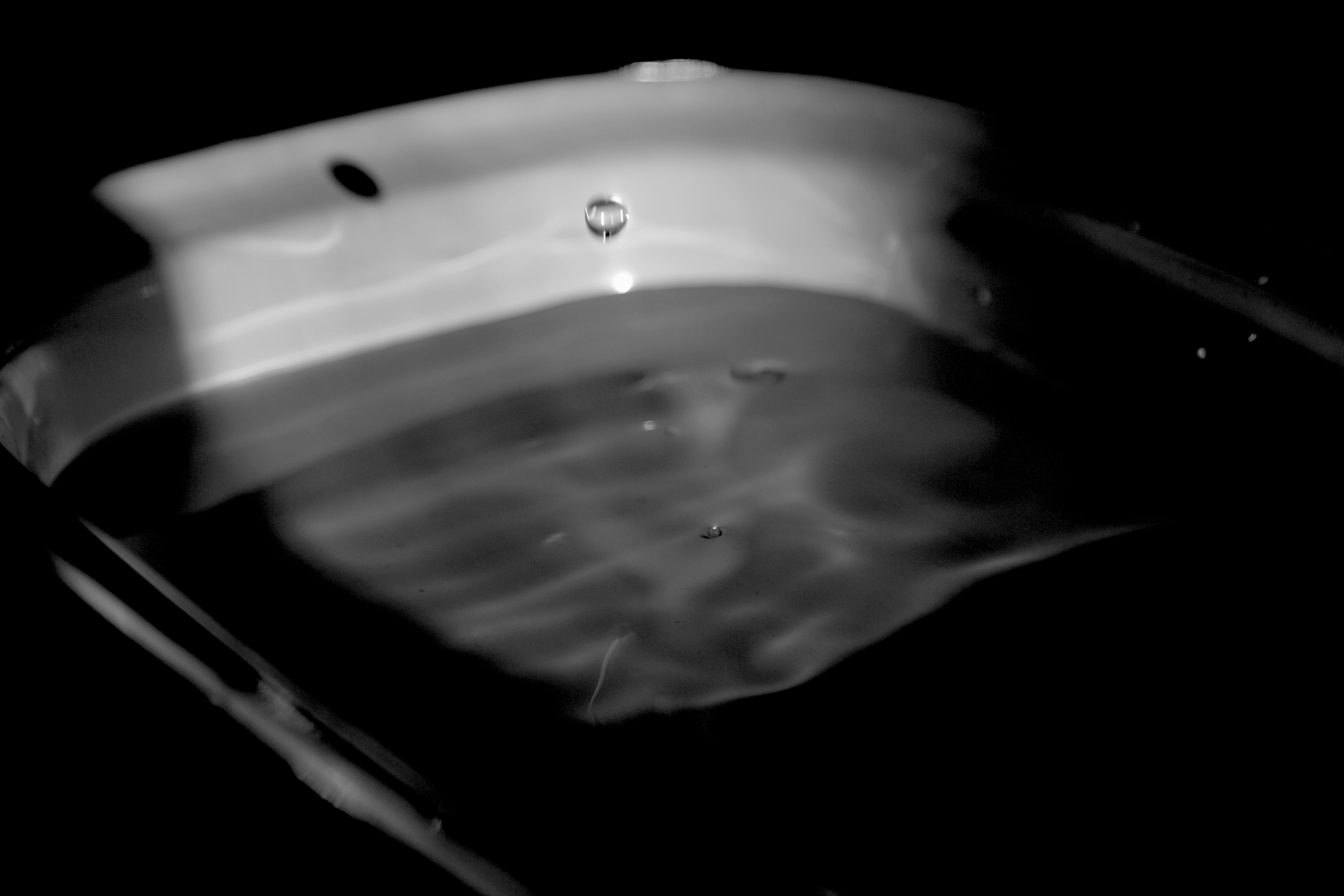
But eventually succeeded -
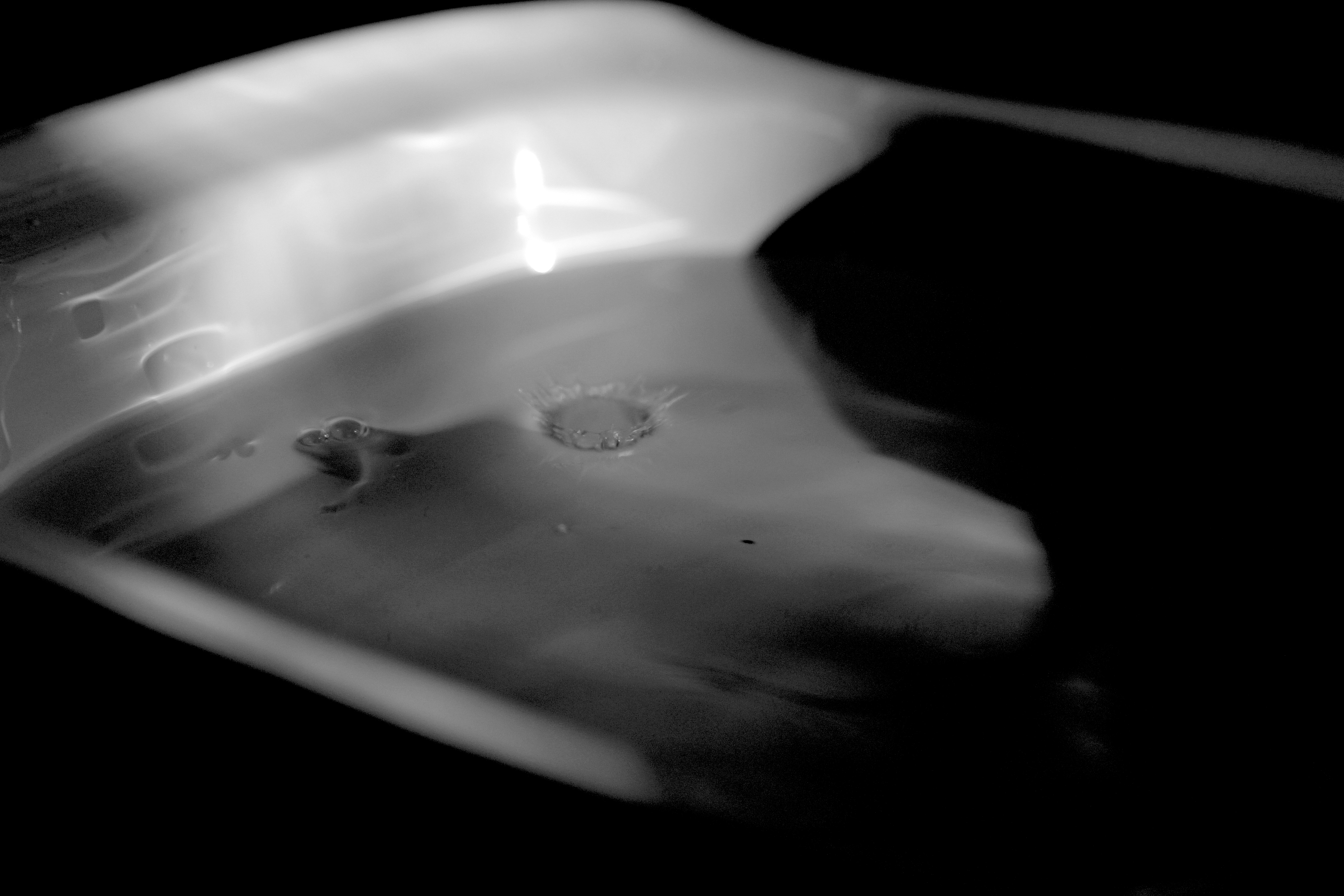
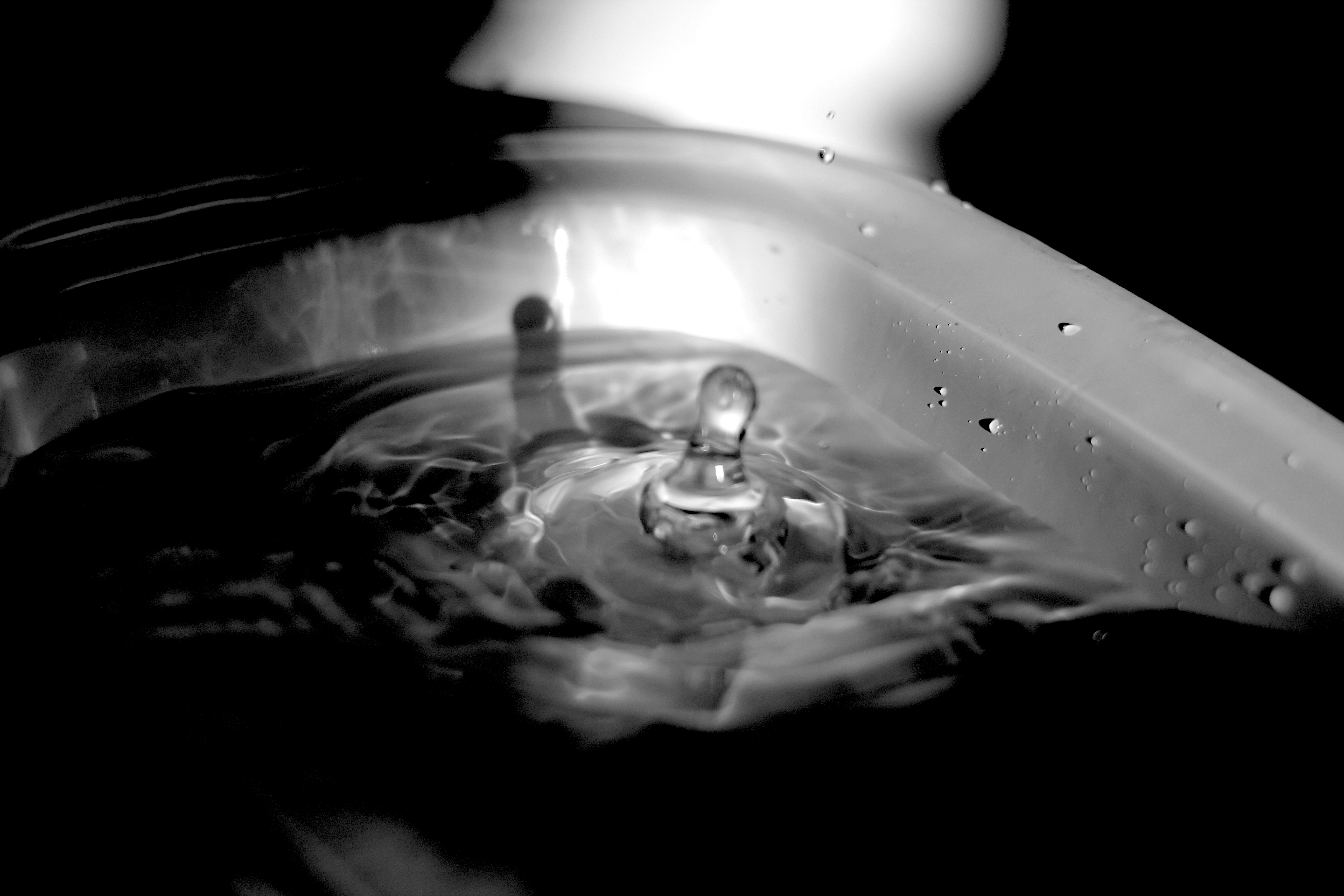
I wanted to compliment the original layout of this documentation but also make it my own by adding colour and texture through Riso printing. I wanted the images to do most, if not all of the talking.
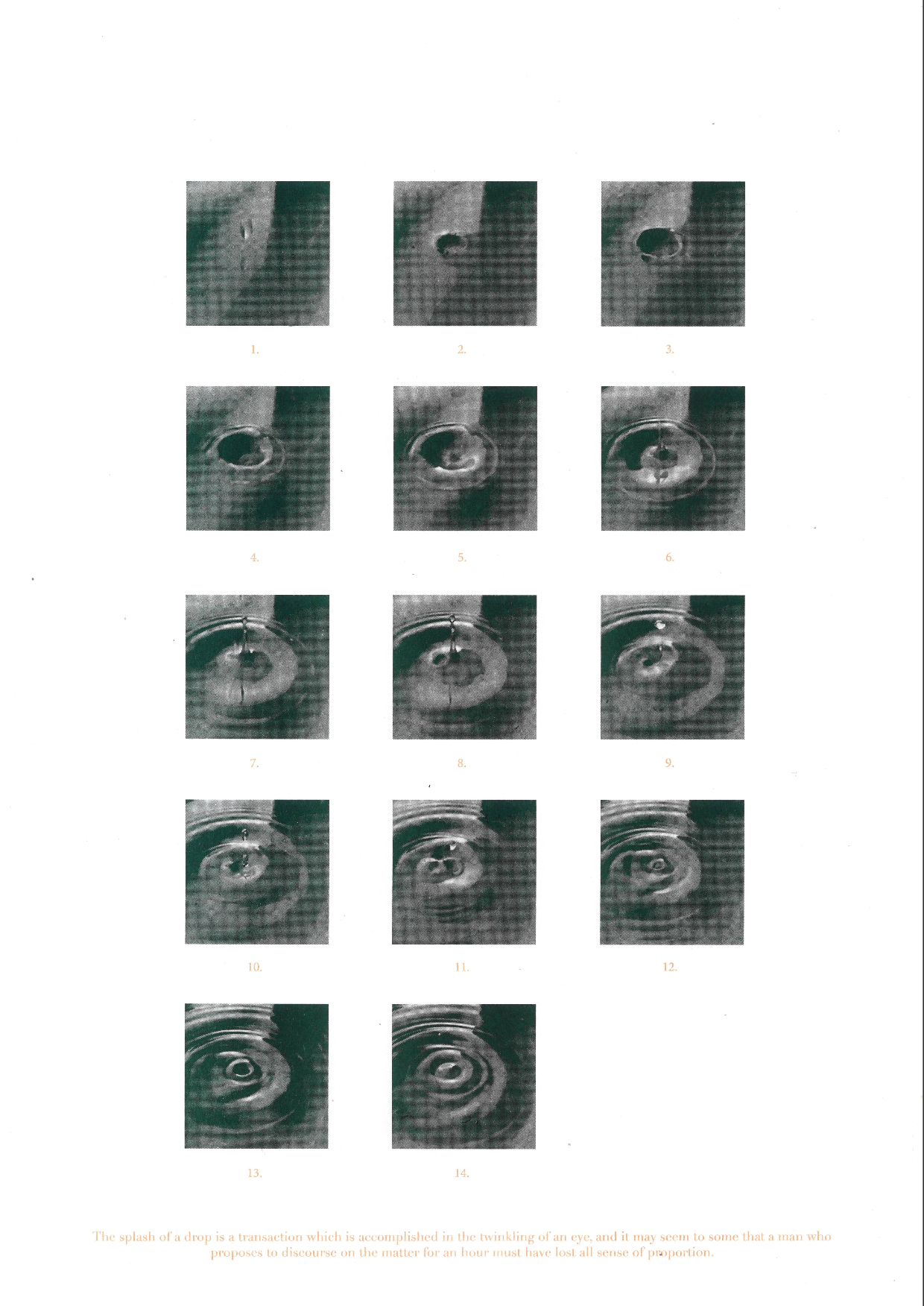
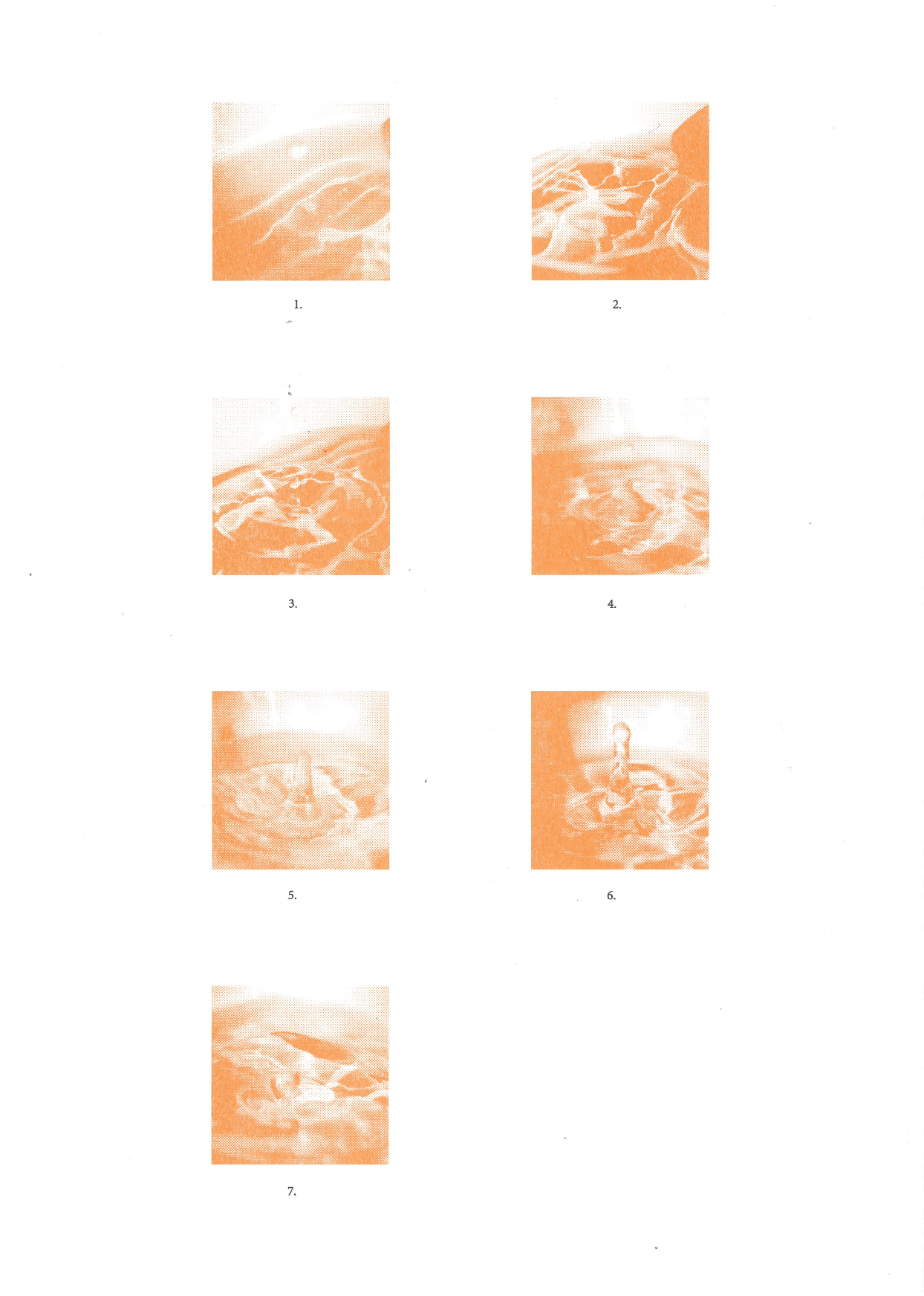
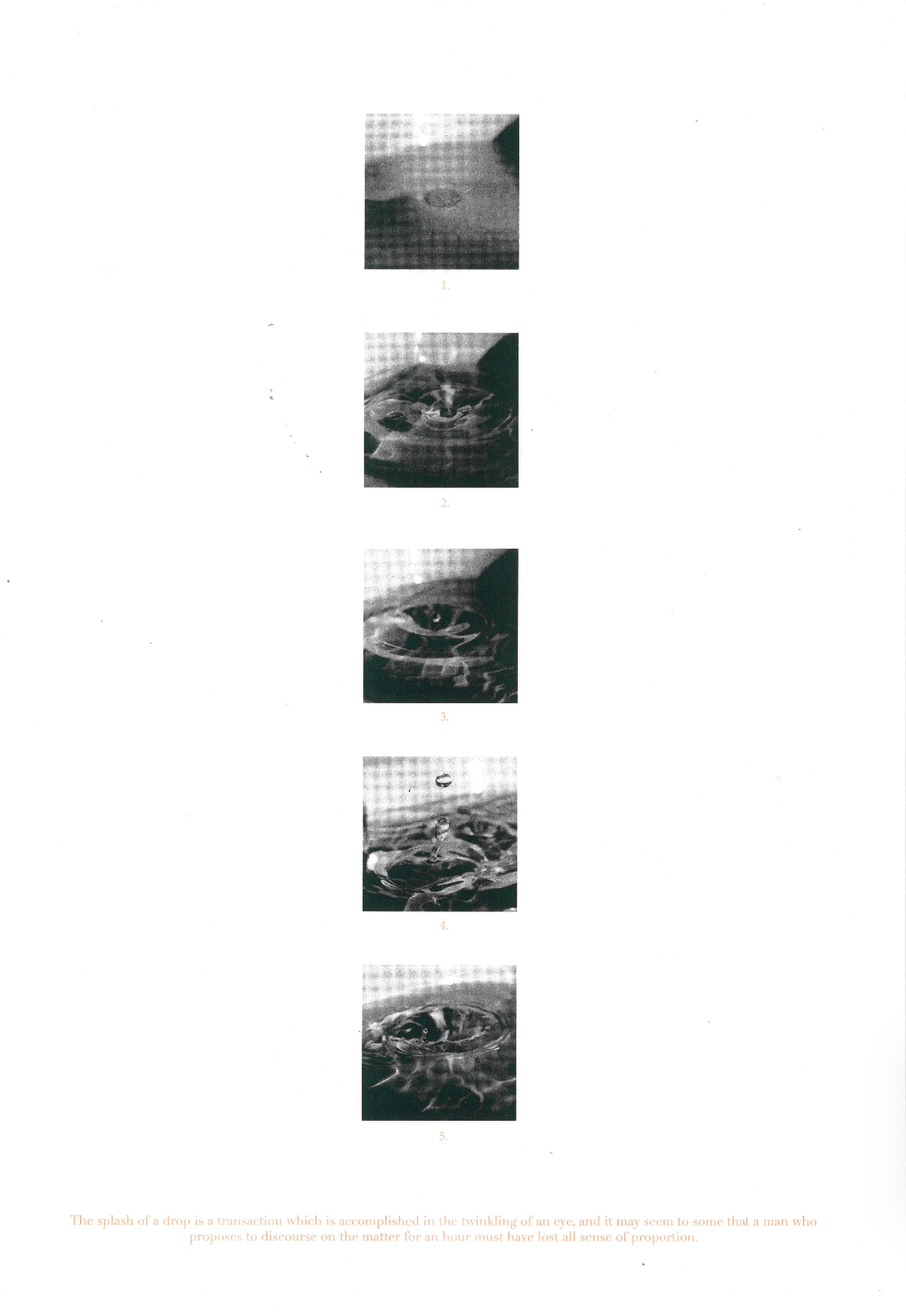
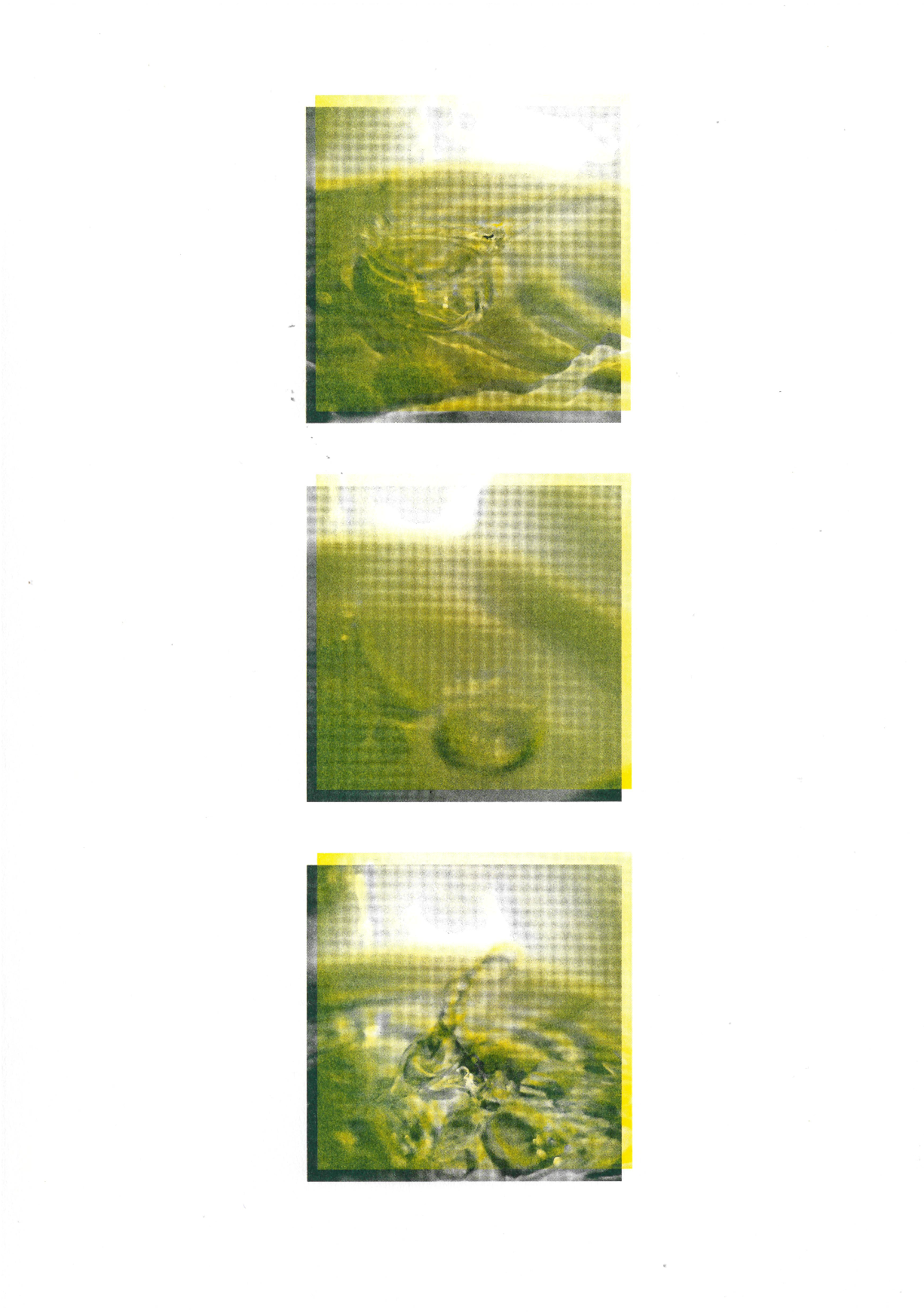
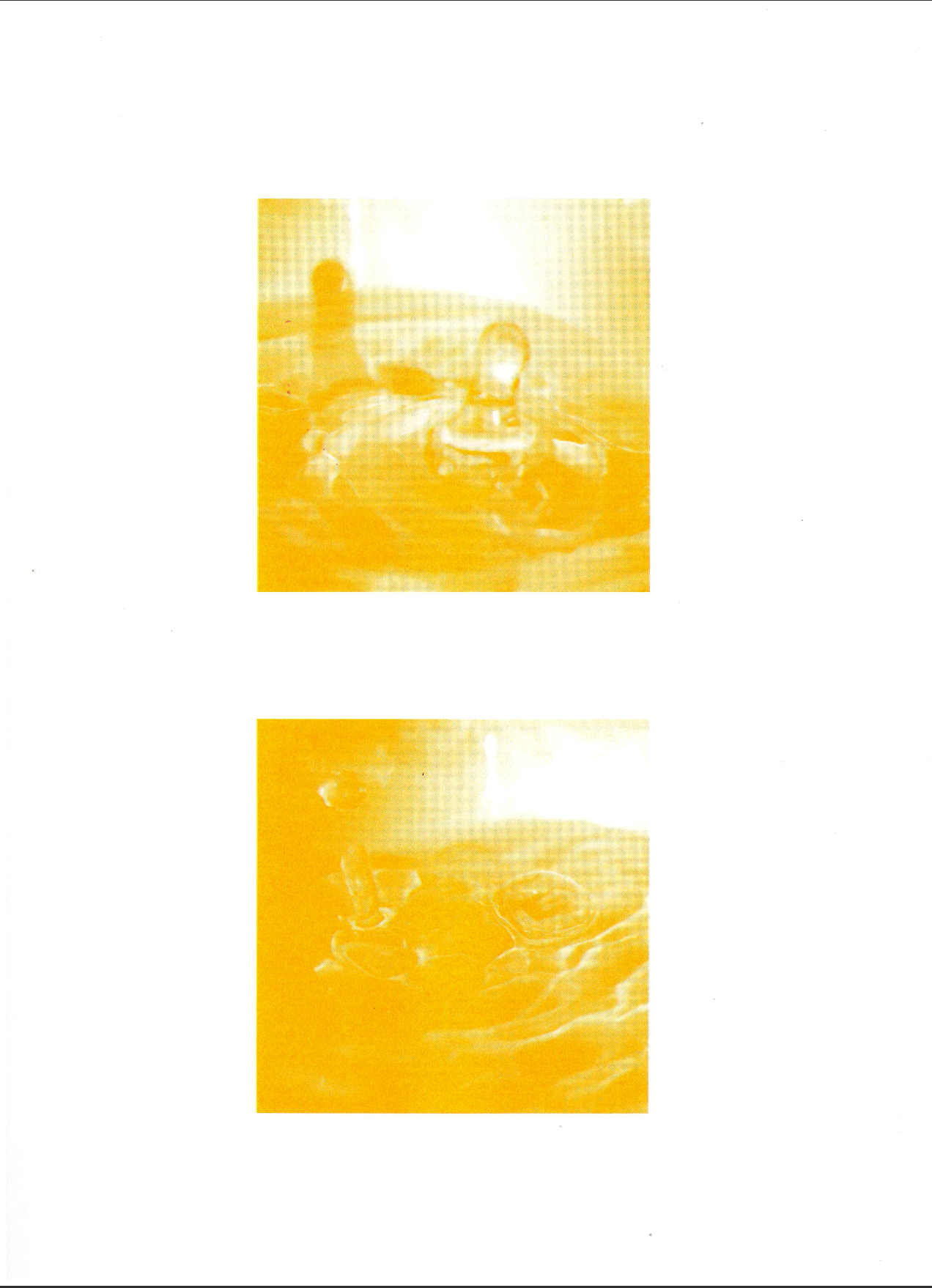
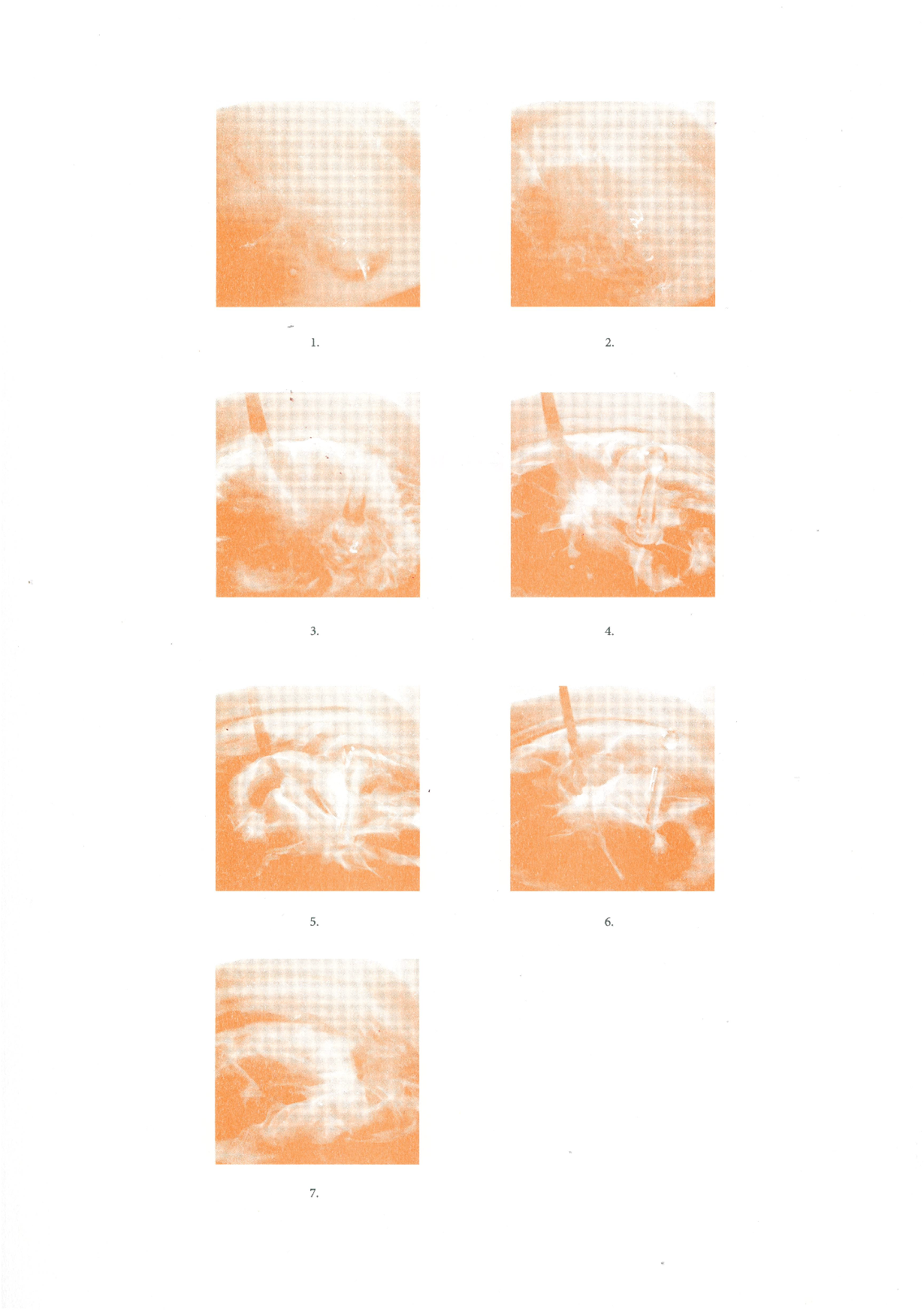
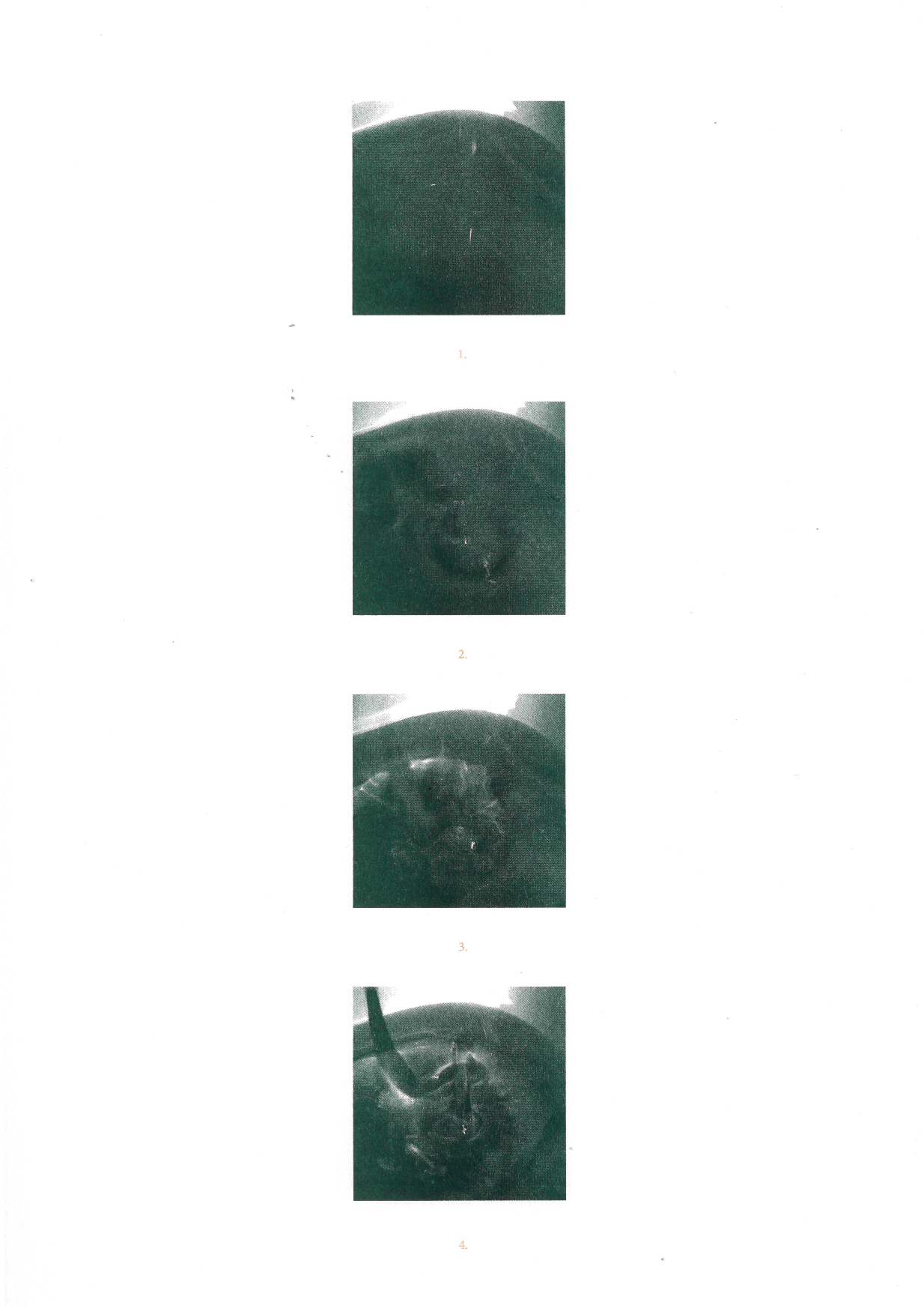
The blue color of the sky is caused by the scattering of sunlight off the molecules of the atmosphere. This scattering, called Rayleigh scattering, is more effective at short wavelengths (the blue end of the visible spectrum). Therefore the light scattered down to the earth at a large angle with respect to the direction of the sun's light is predominantly in the blue end of the spectrum.
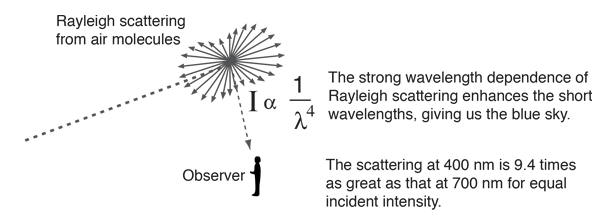
Note that the blue of the sky is more saturated when you look further from the sun. The almost white scattering near the sun can be attributed to Mie scattering, which is not very wavelength dependent.
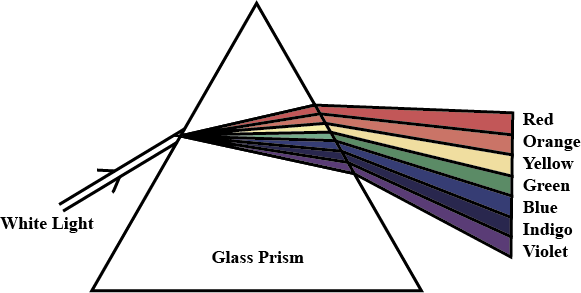
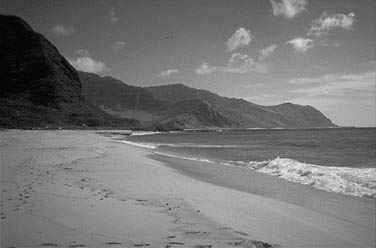
Clouds in contrast to the blue sky appear white to achromatic gray.
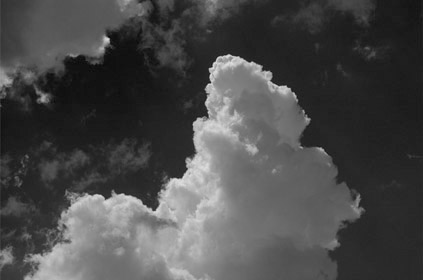
The water droplets that make up the cloud are much larger than the molecules of the air and the scattering from them is almost independent of wavelength in the visible range.
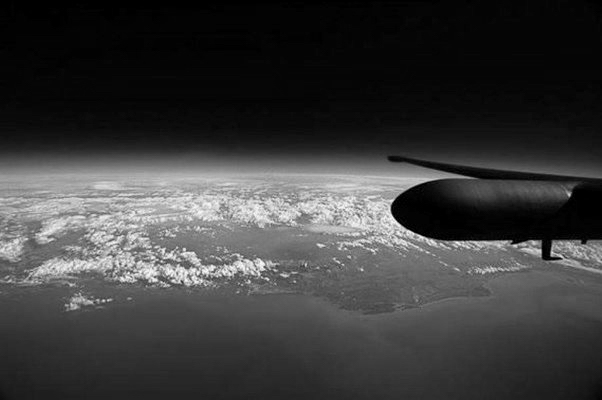
Rayleigh scattering refers to the scattering of light off of the molecules of the air, and can be extended to scattering from particles up to about a tenth of the wavelength of the light. It is Rayleigh scattering off the molecules of the air which gives us the blue sky. Lord Rayleigh calculated the scattered intensity from dipole scatterers much smaller than the wavelength to be:
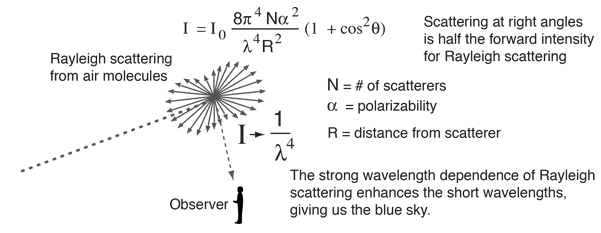
Rayleigh scattering can be considered to be elastic scattering since the photon energies of the scattered photons is not changed. Scattering in which the scattered photons have either a higher or lower photon energy is called Raman scattering. Usually this kind of scattering involves exciting some vibrational mode of the molecules, giving a lower scattered photon energy, or scattering off an excited vibrational state of a molecule which adds its vibrational energy to the incident photon.
The scattering from molecules and very tiny particles (< 1 /10 wavelength) is predominantly Rayleigh scattering. For particle sizes larger than a wavelength, Mie scattering predominates. This scattering produces a pattern like an antenna lobe, with a sharper and more intense forward lobe for larger particles.

Mie scattering is not strongly wavelength dependent and produces the almost white glare around the sun when a lot of particulate material is present in the air. It also gives us the the white light from mist and fog.
Greenler in his "Rainbows, Haloes and Glories" has some excellent color plates demonstrating Mie scattering and its dramatic absence in the particle-free air of the polar regions.
As white light passes through our atmosphere, tiny air molecules cause it to 'scatter'. The scattering caused by these tiny air molecules (known as Rayleigh scattering) increases as the wavelength of light decreases. Violet and blue light have the shortest wavelengths and red light has the longest.
Every description that I came across, explaining why the sky is blue was wordy and in some cases difficult to understand.
I found an experiment that explained this process in simple and clear visual examples.
To emulate the particles suspended in the sky, drop a teaspoon of milk into a clear container filled with water.
Make sure you are in a dark room!
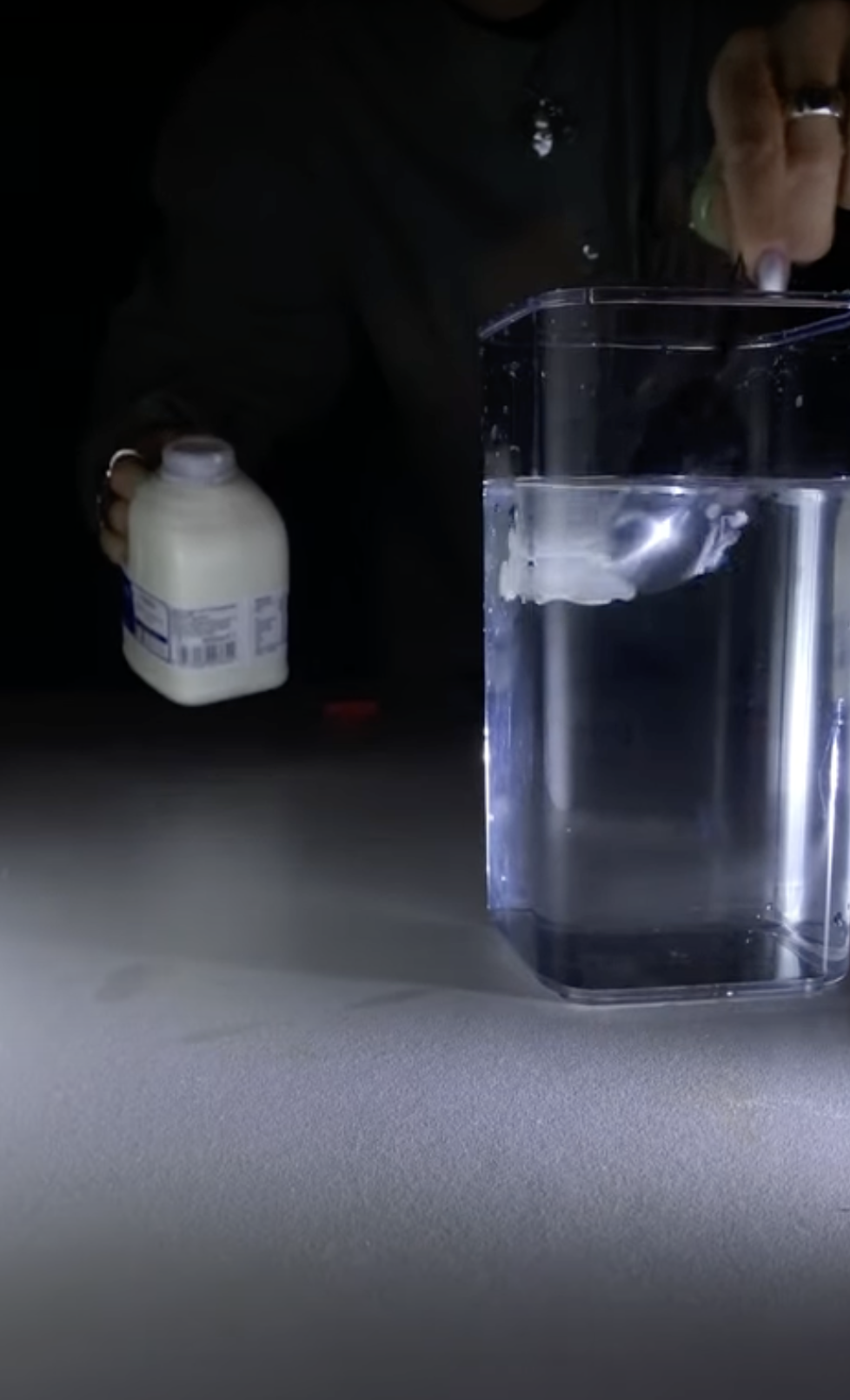
Make sure you are in a dark room!
Place the container in front of a wall and shine the light of a torch through the container.
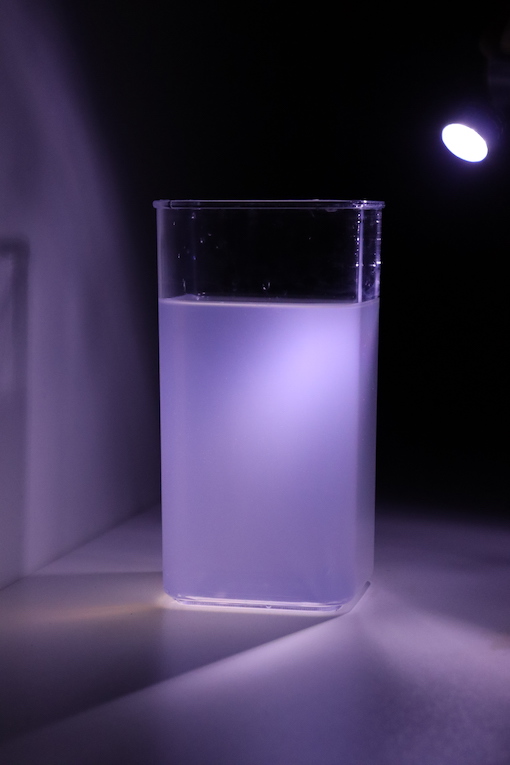
As the light travels through the container the water will appear a blue/violet colour, this is due to rayleigh scattering as blue light is the most effective wave when it comes to the scattering of light in short wavelengths.

As the light passes through the container and projects onto the wall the blue light will shift to an orange hue.
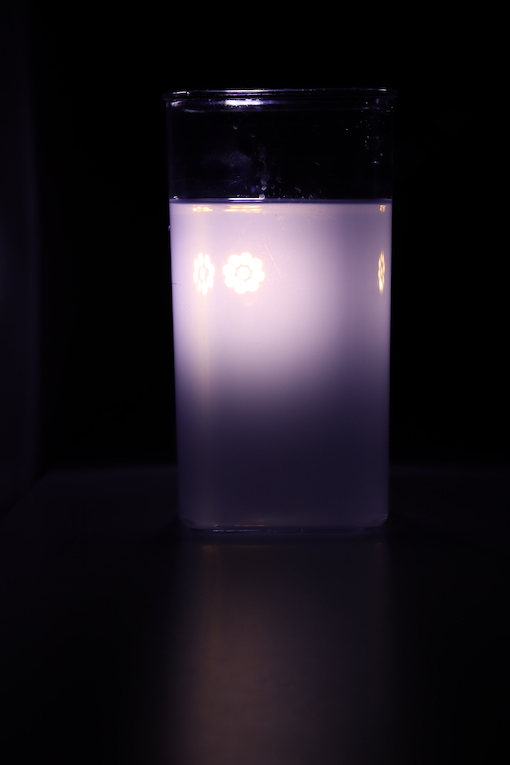
This is due to the fact that as the light has further to travel and the blue/violet light has more particles to disperse it reveals the orange light.
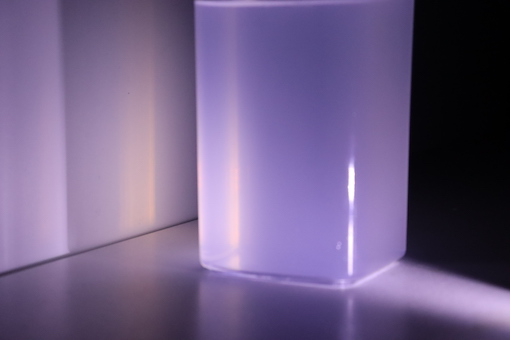
I documented this transformation and put my findings into context. I chose to split the channels of colour and only show the cyan and yellow/magenta (to create an orange hue).
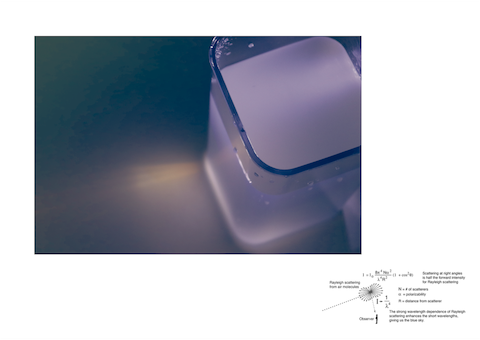

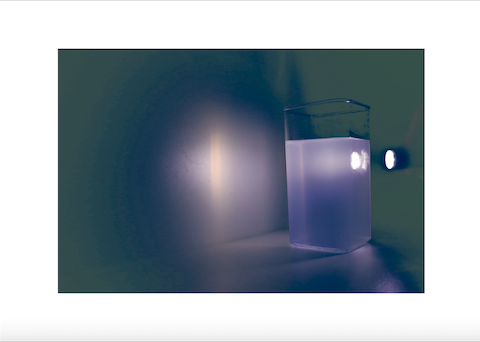
I Riso printed these channels in a deep blue and yellow or orange colour. In some cases i lost the effect I hoped to achieve but in other cases the colours worked with me to achieve this isolation of the two hues.
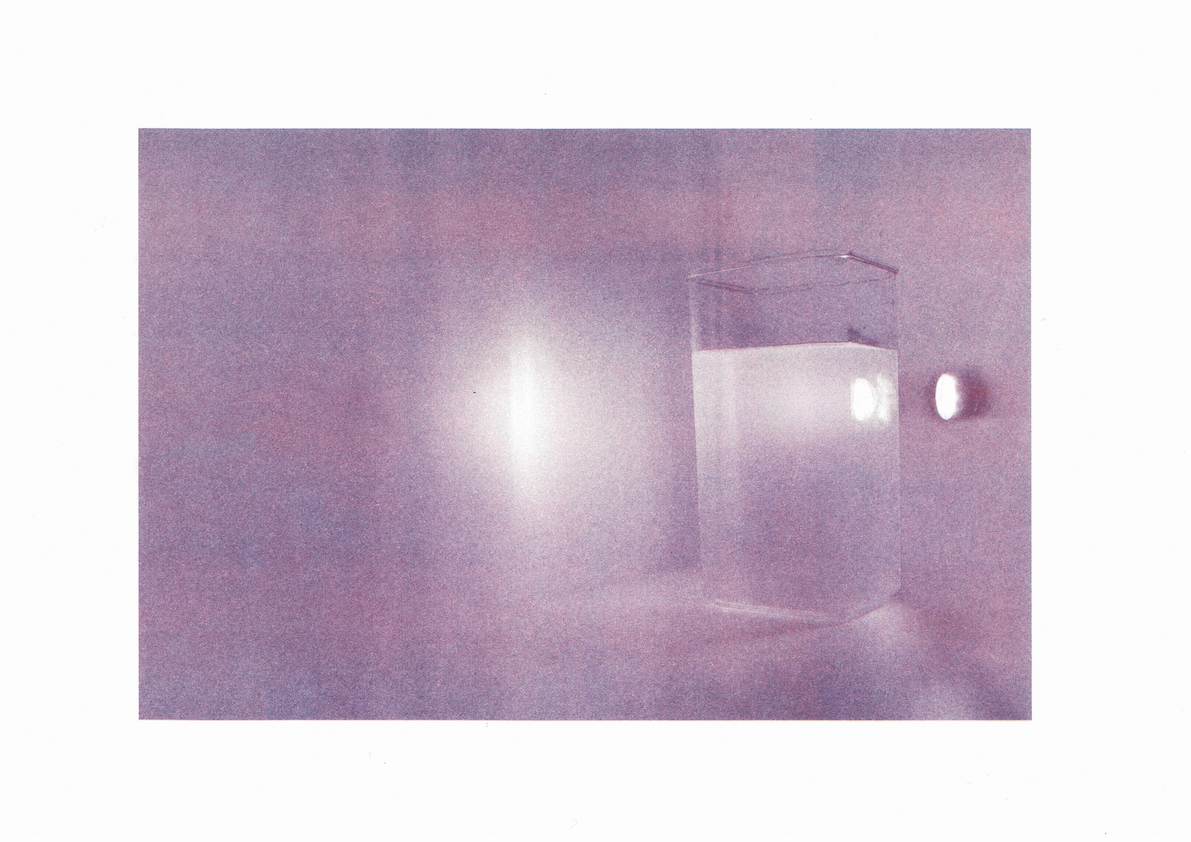
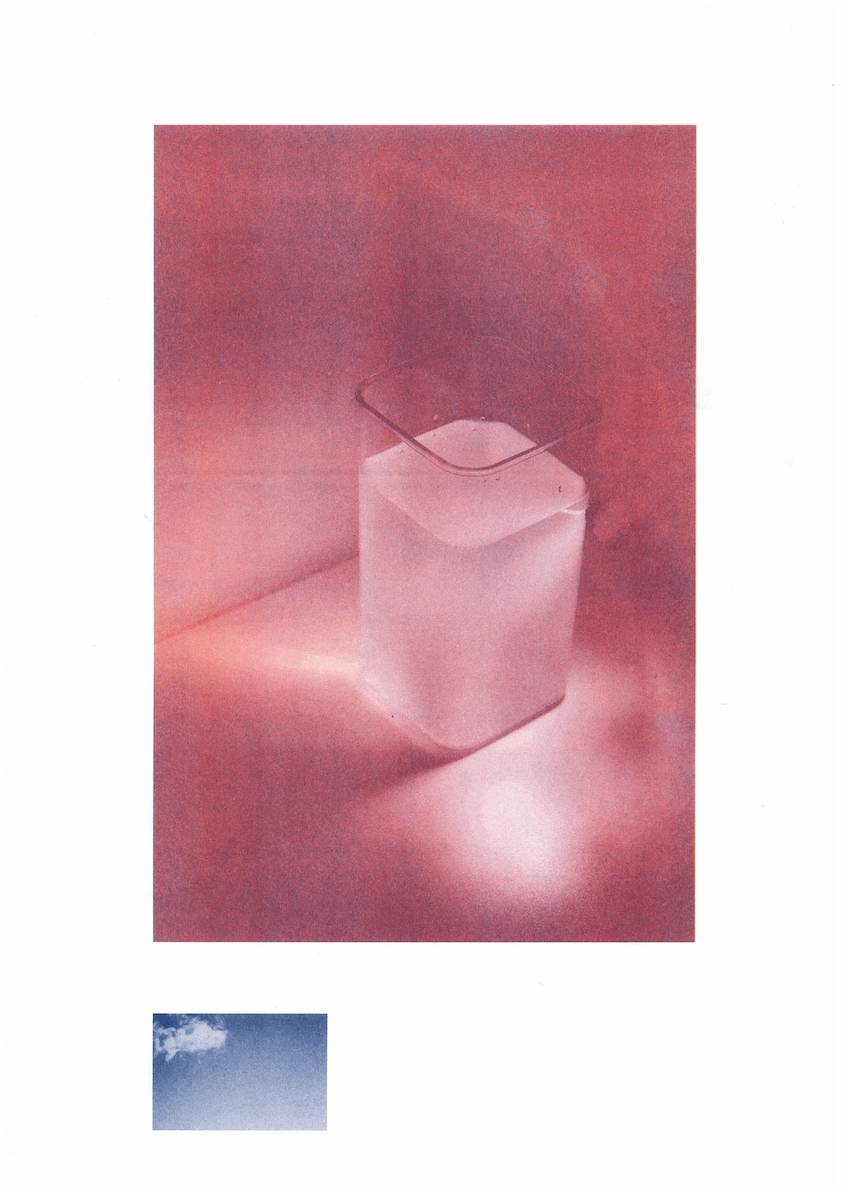
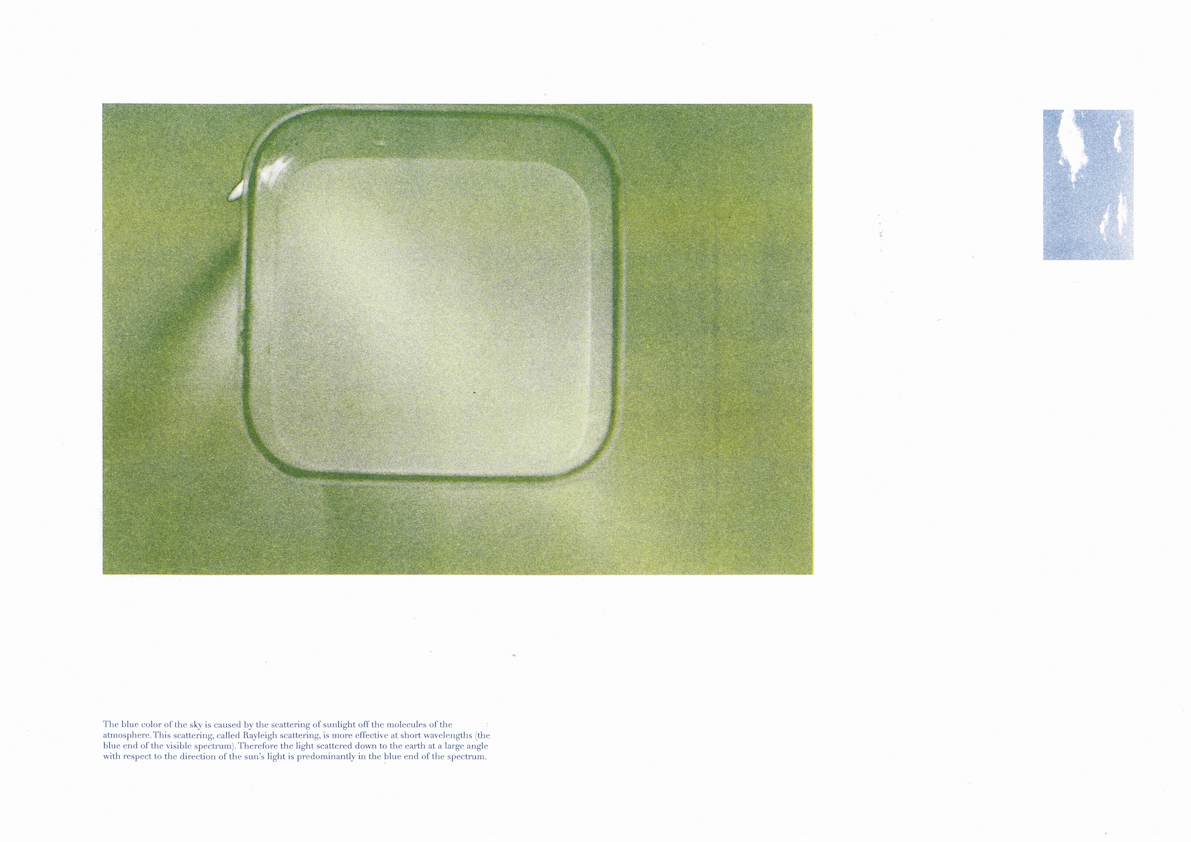
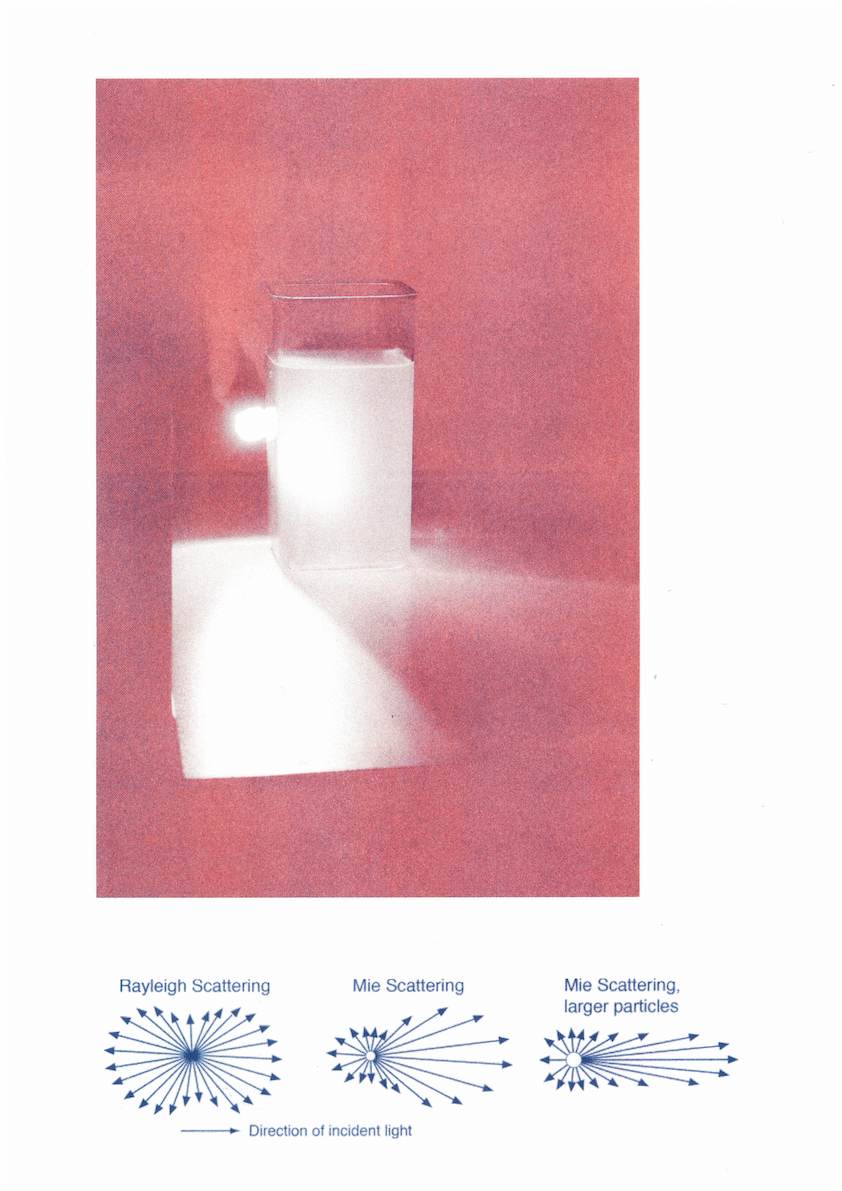
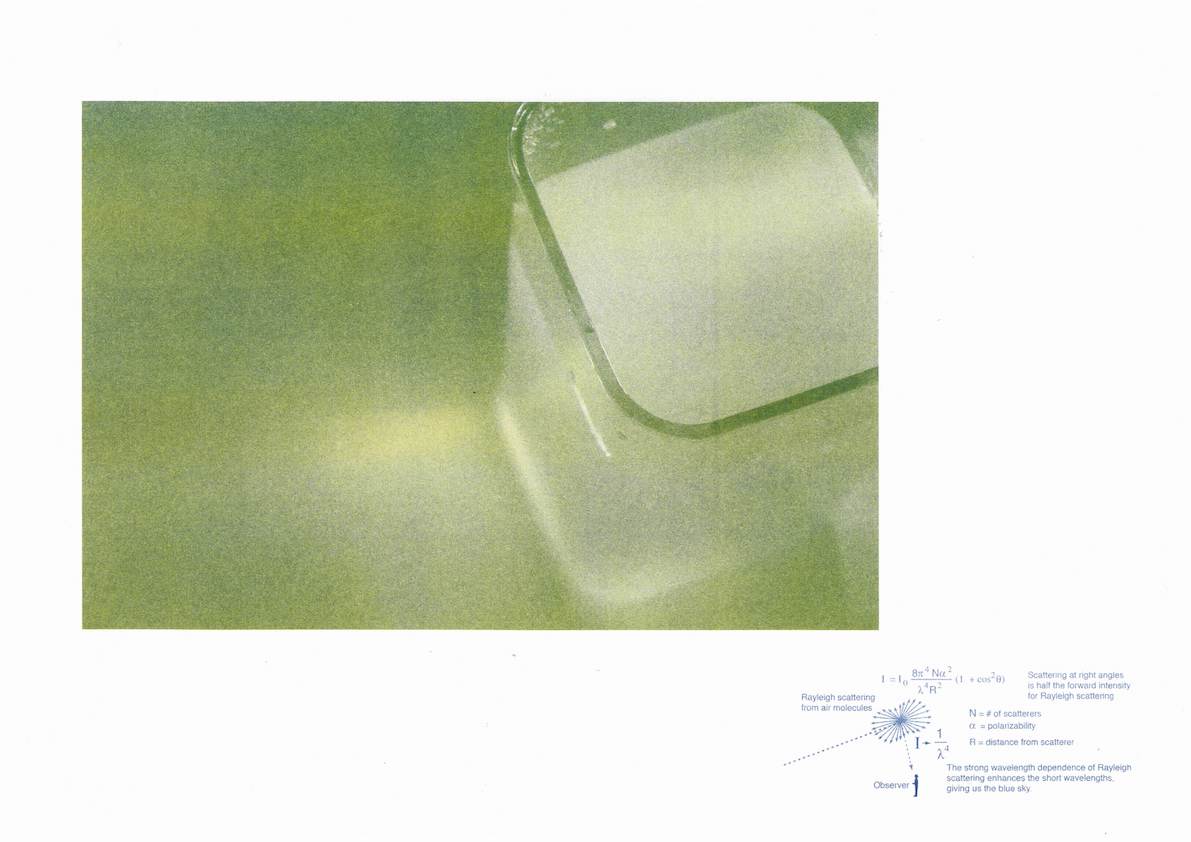
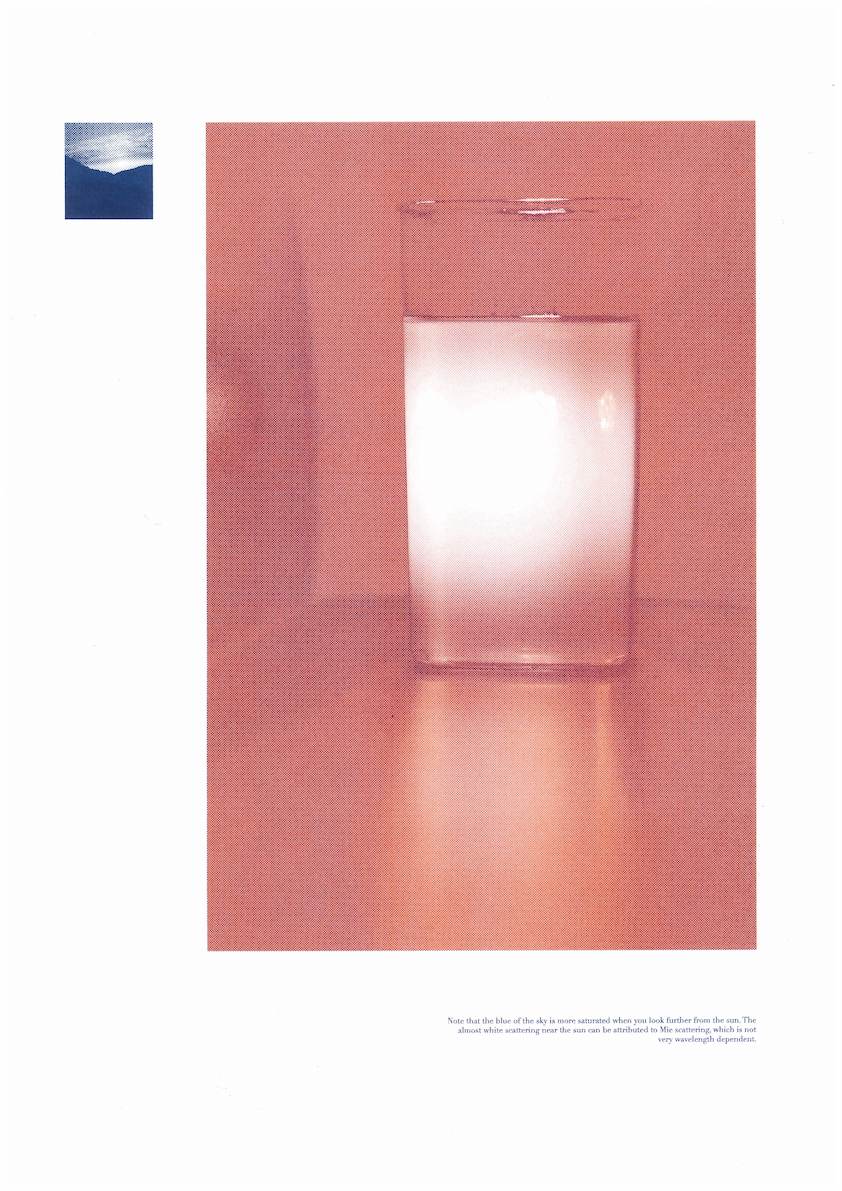
The microwave radiation of microwave ovens and some radar applications is produced by a device called a magnetron. Modern microwave ovens operate at the frequency 2,450 MHz.

Usually, the major heating effect of microwaves in an oven is the heating of the water included in the material. If you are heating pure water, the heating can be modeled more precisely. For pure water, the penetration of the microwaves into the water can be modeled and is charaterized by the depth of penetration which drops the microwave power by a factor 1/e, representing the absorption of 63% of the microwave power. For water at 25°C, this penetration depth is approximately 1.4 cm according to Chaplin.
** The heat created in a microwave oven is caused by the rapid vibration of standing waves on water molecules
The term standing wave is often applied to a resonant mode of an extended vibrating object. The resonance is created by constructive interference of two waves which travel in opposite directions in the medium, but the visual effect is that of an entire system moving in simple harmonic motion.

The modes of vibration associated with resonance in extended objects like strings and air columns have characteristic patterns called standing waves. These standing wave modes arise from the combination of reflection and interference such that the reflected waves interfere constructively with the incident waves. An important part of the condition for this constructive interference for stretched strings is the fact that the waves change phase upon reflection from a fixed end.
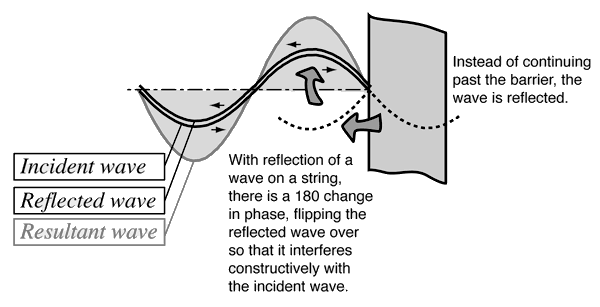
The behavior of the waves at the points of minimum and maximum vibrations (nodes and antinodes) contributes to the constructive interference which forms the resonant standing waves. The illustration above involves the transverse waves on a string, but standing waves also occur with the longitudinal waves in an air column. Standing waves in air columns also form nodes and antinodes, but the phase changes involved must be separately examined for the case of air columns.
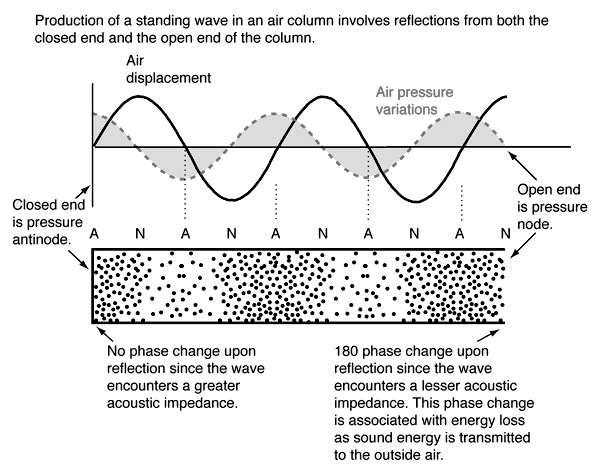

Thermal typewriters transfer letters to the page by using an electronically heated element. More common are impact-printing typewriters with a daisy wheel or cup that actually strikes the ribbon and paper.
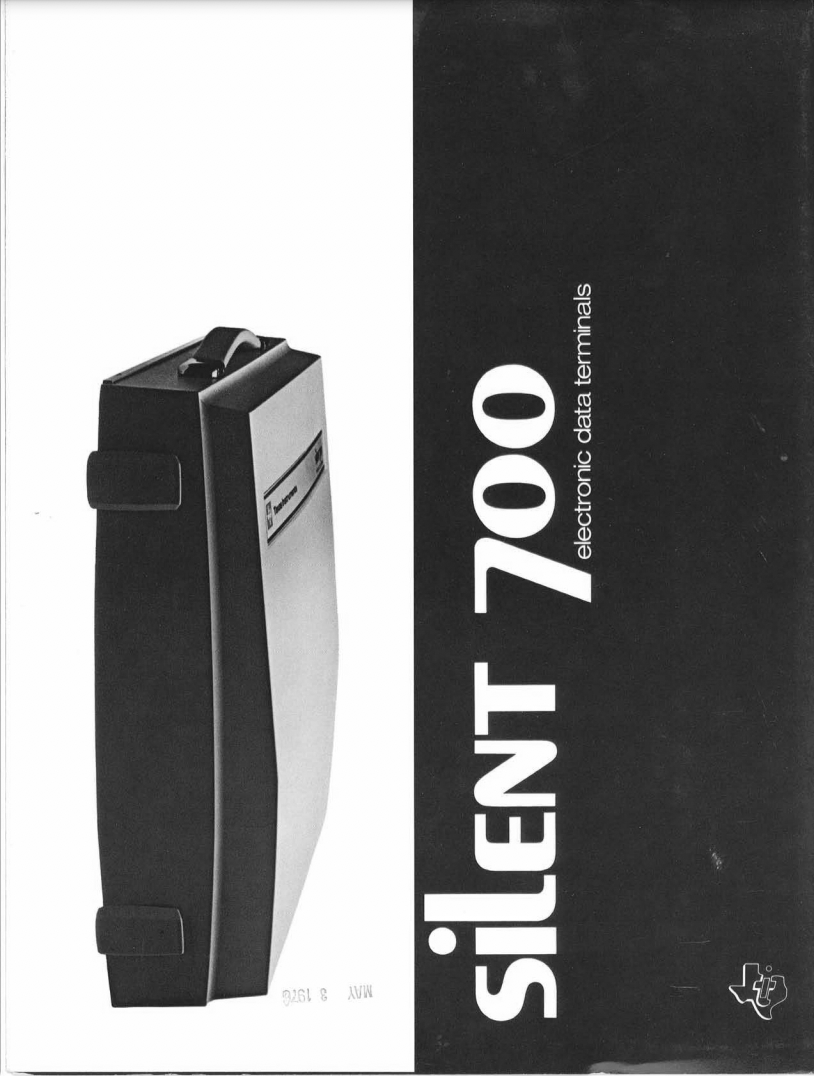


1) You can not see the line you are writing, it is hidden from view because the actual print head is buried five lines below the part where the paper leaves the machine.
2) I made it so that there is no backspace. So every letter you write is committed to paper forever, it makes you think twice before mashing the keyboard.
3) A side effect of not being able to see the previous 5 lines you wrote is that you have to keep track of what you have written. It forces you to maintain focus and flow — there is no way to check what you’ve written until it comes up and out of the printer.
